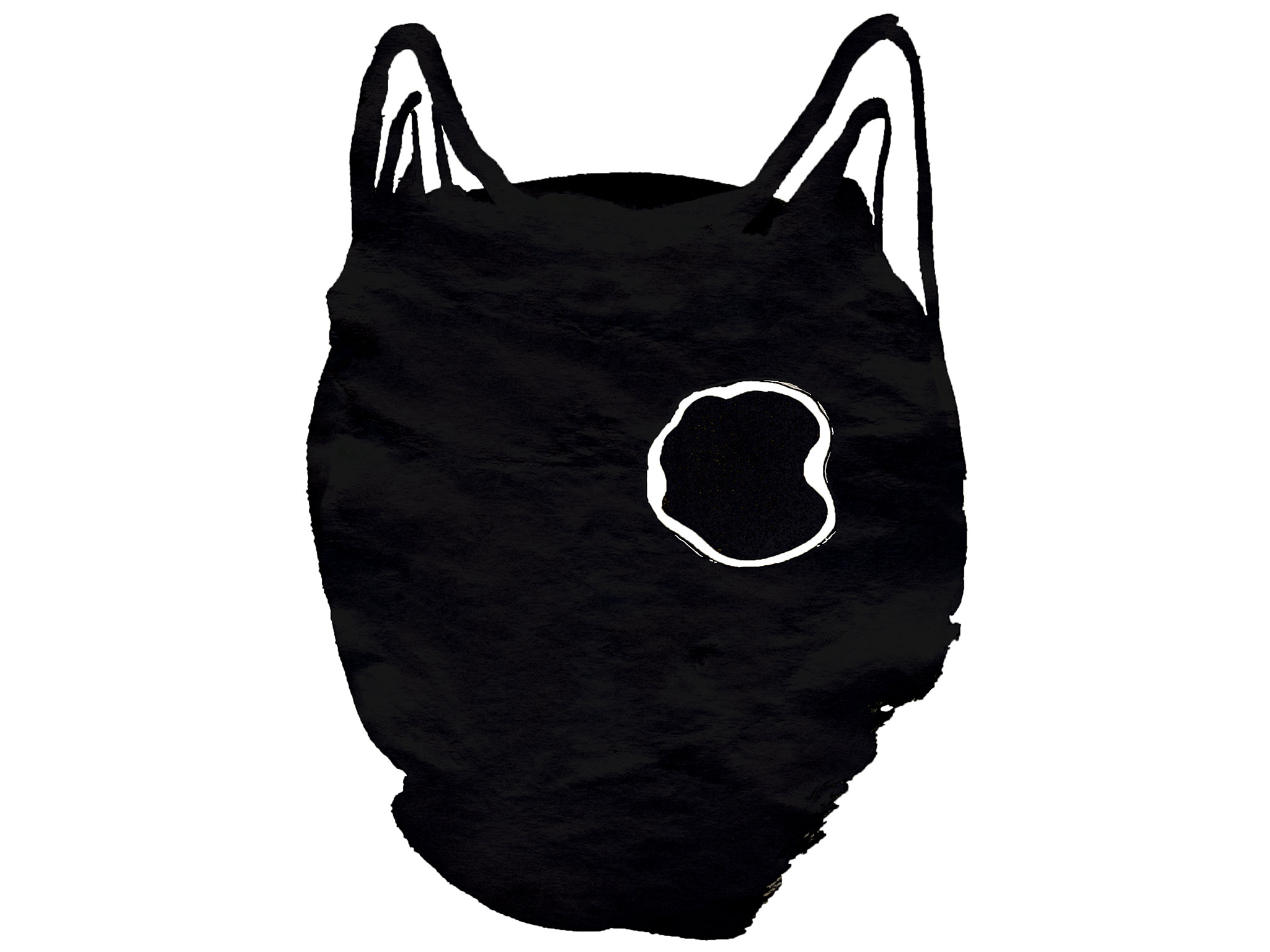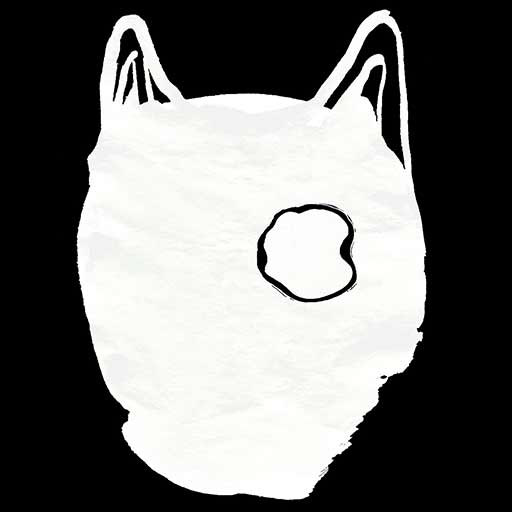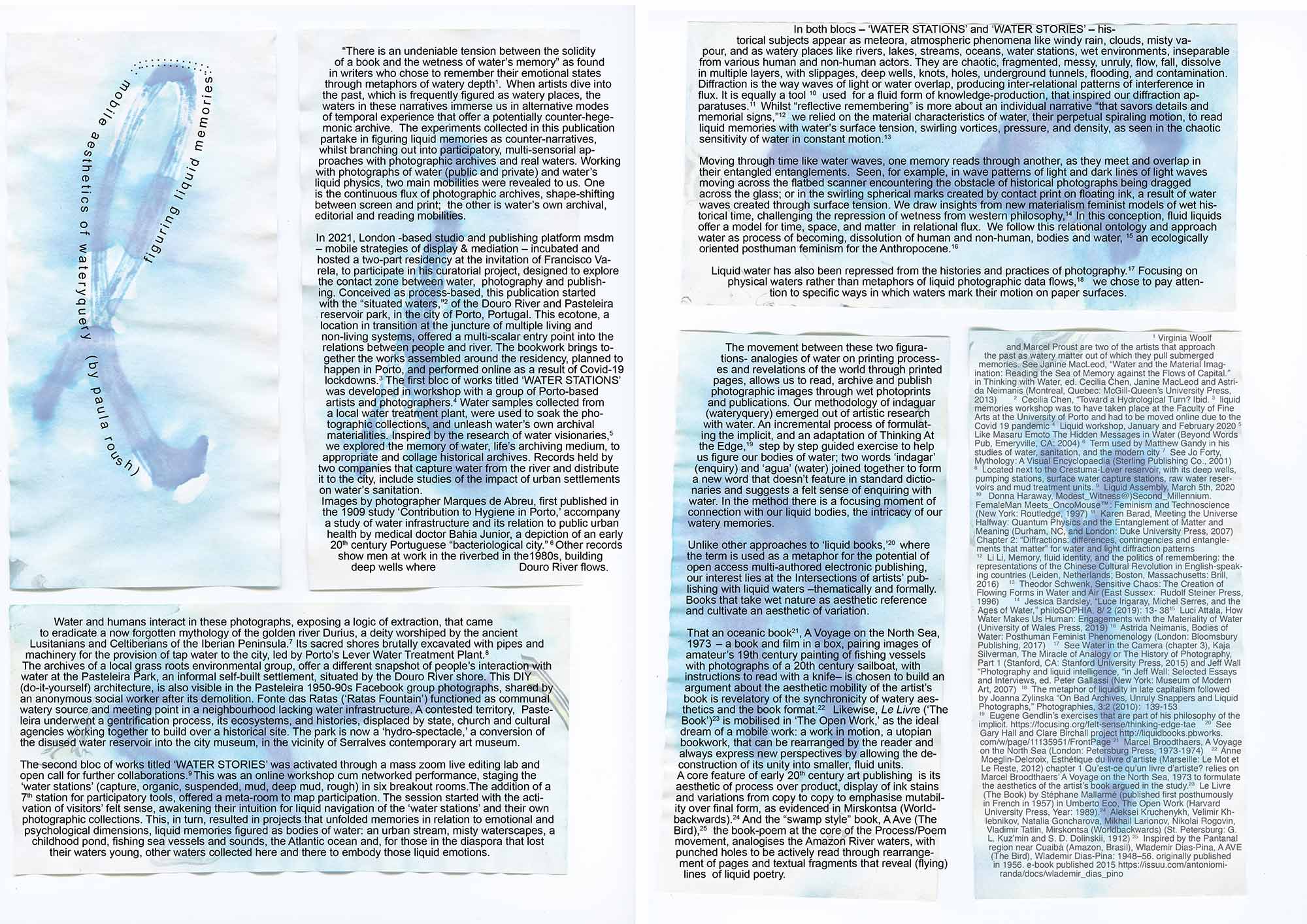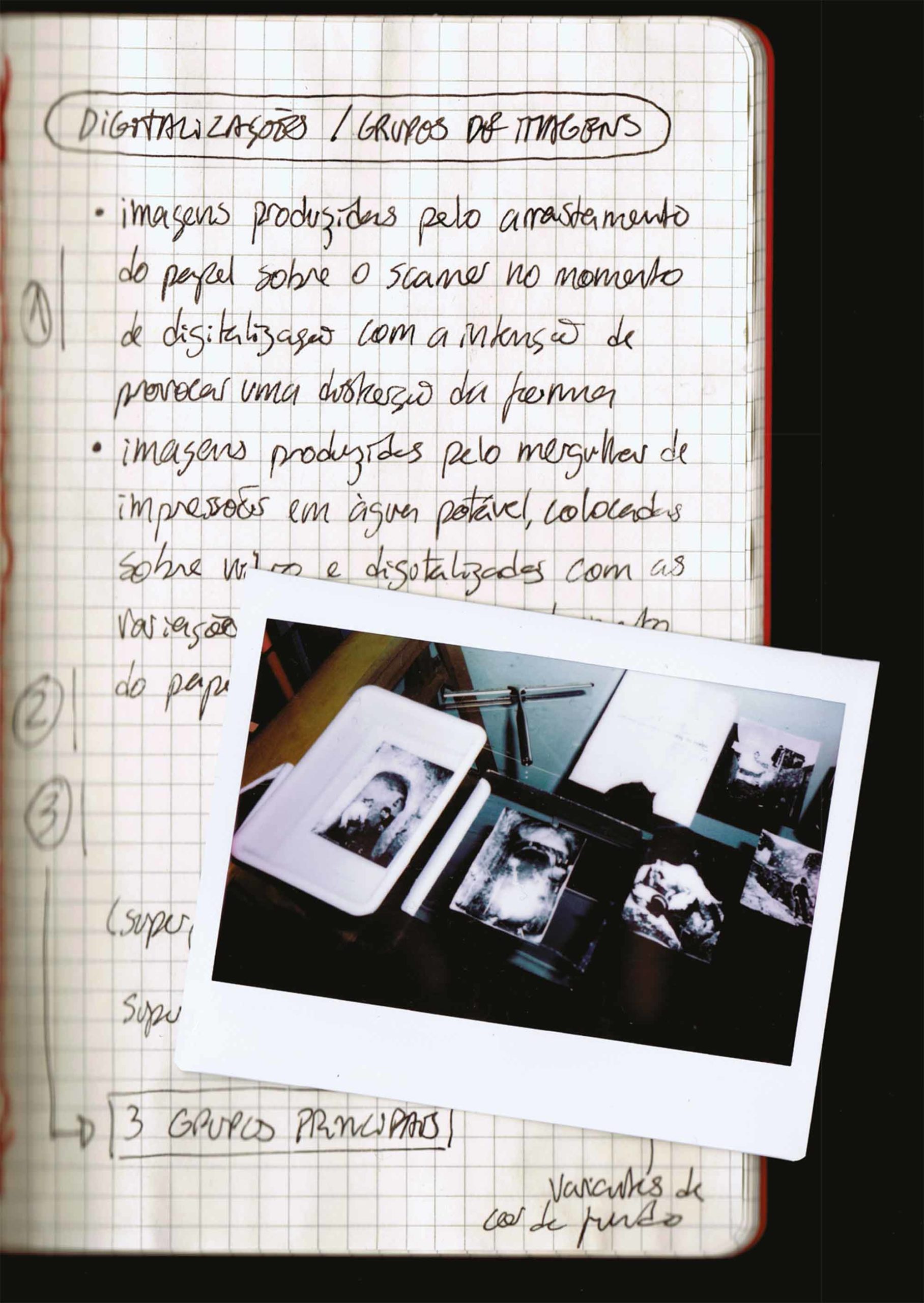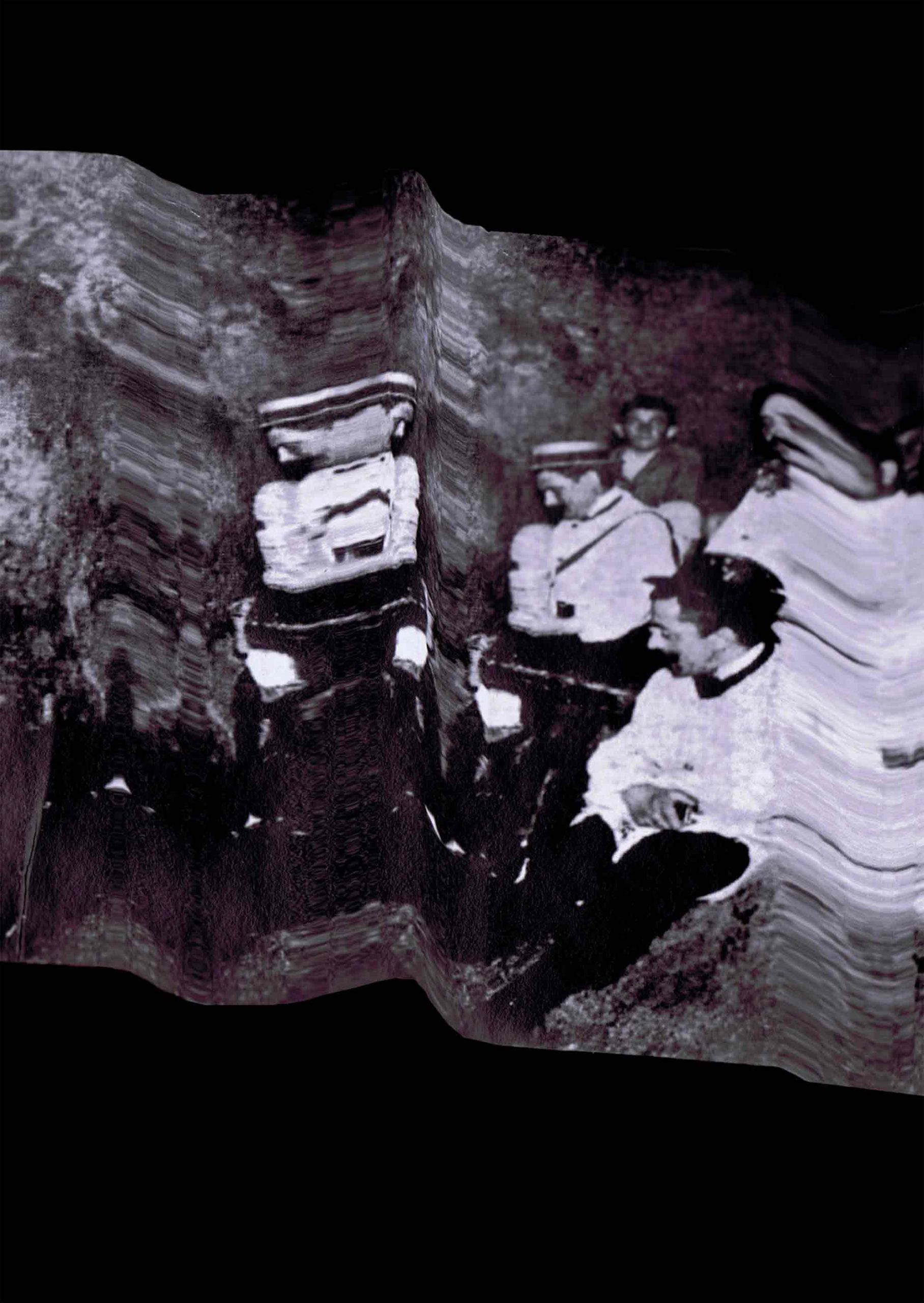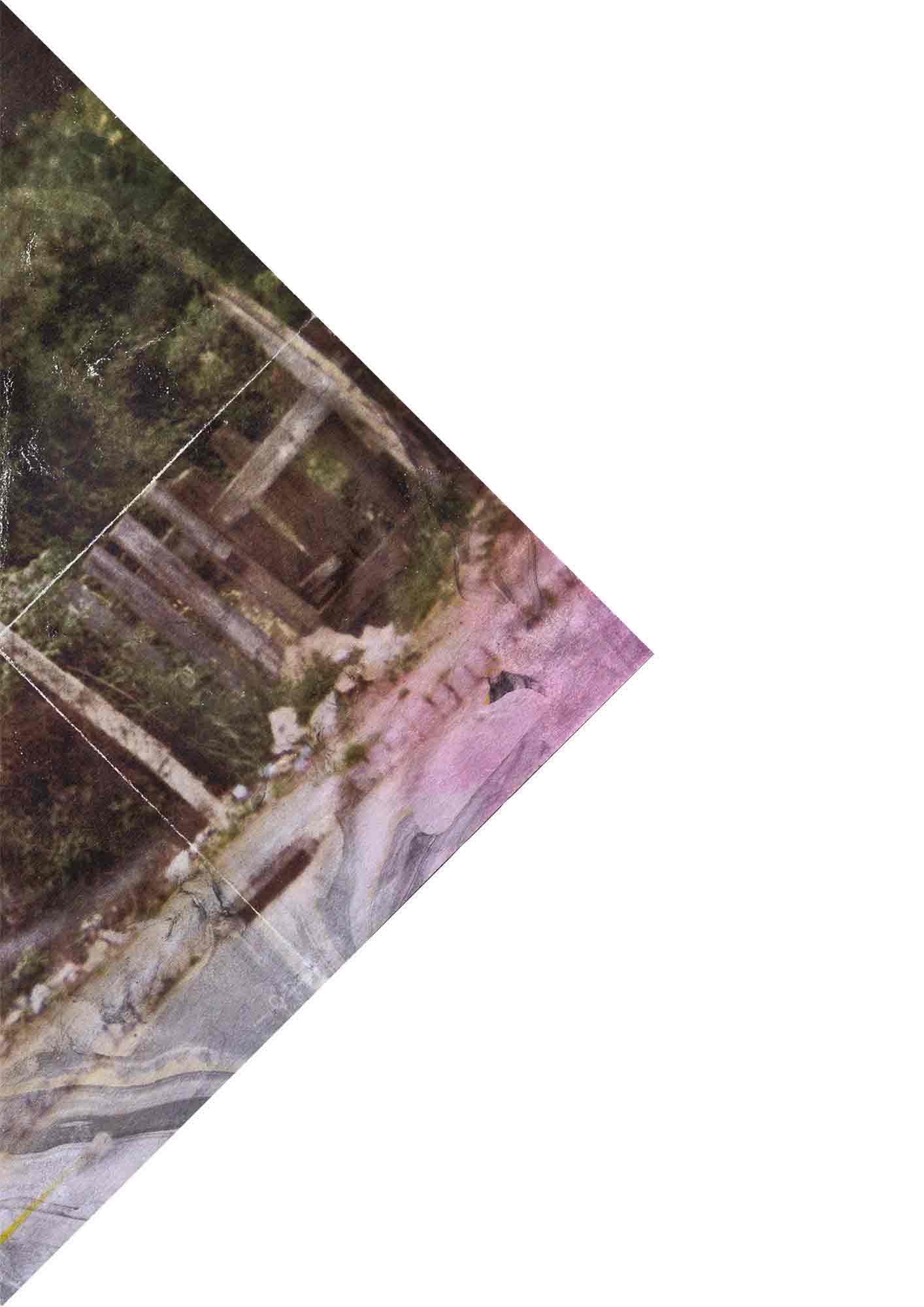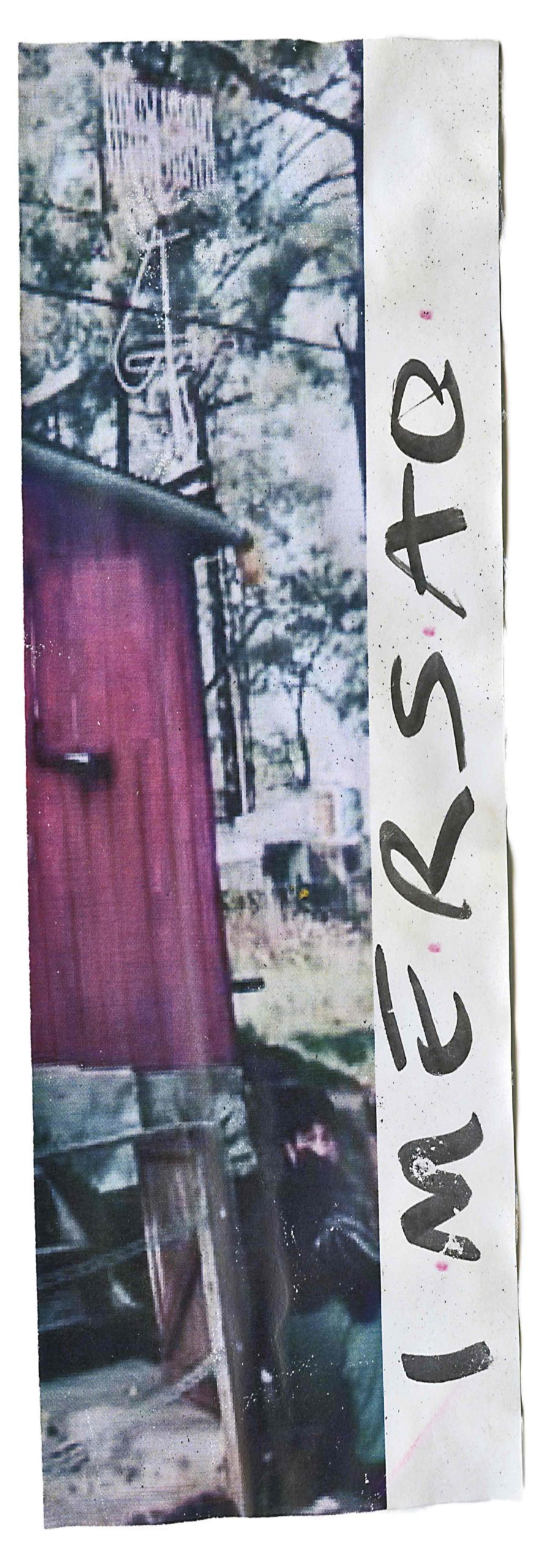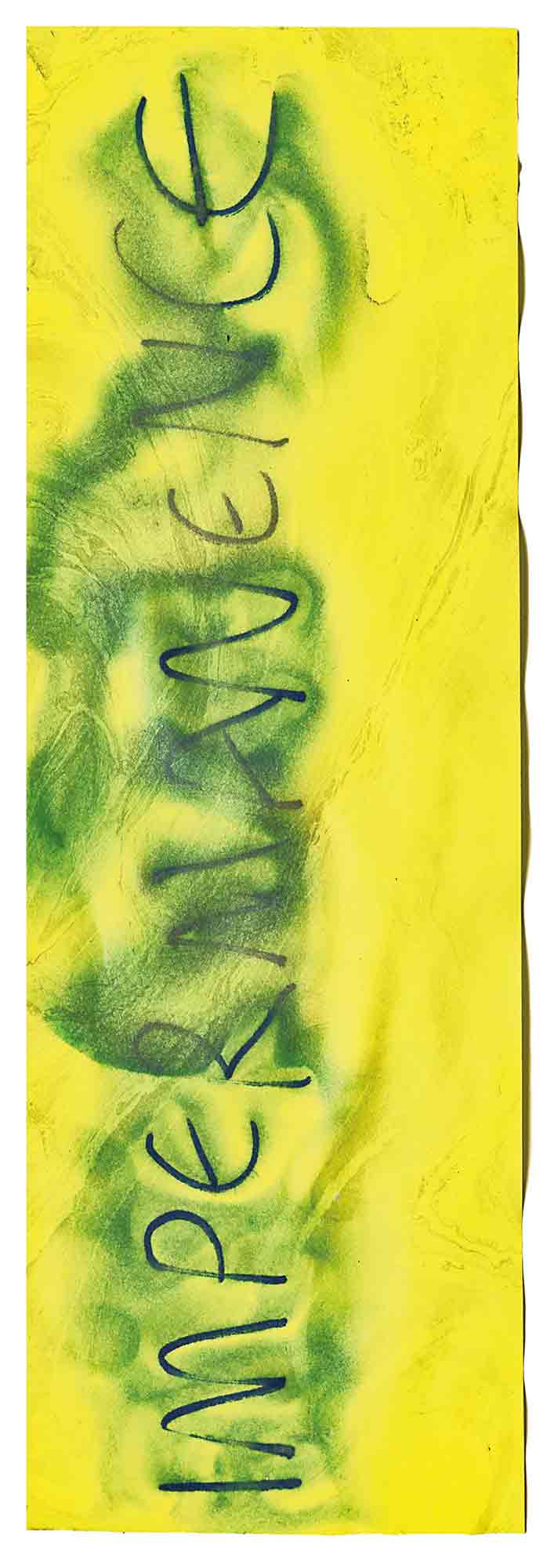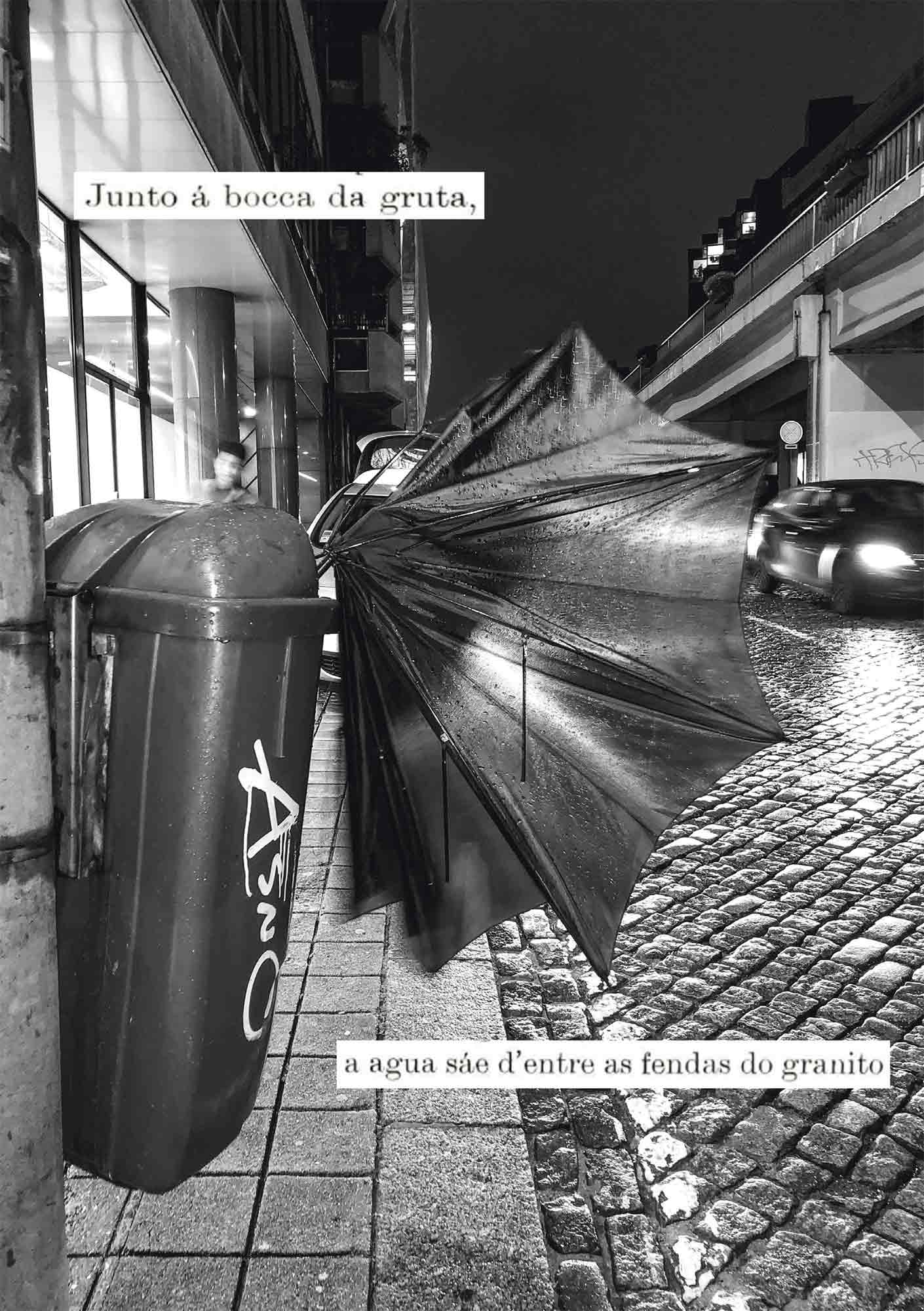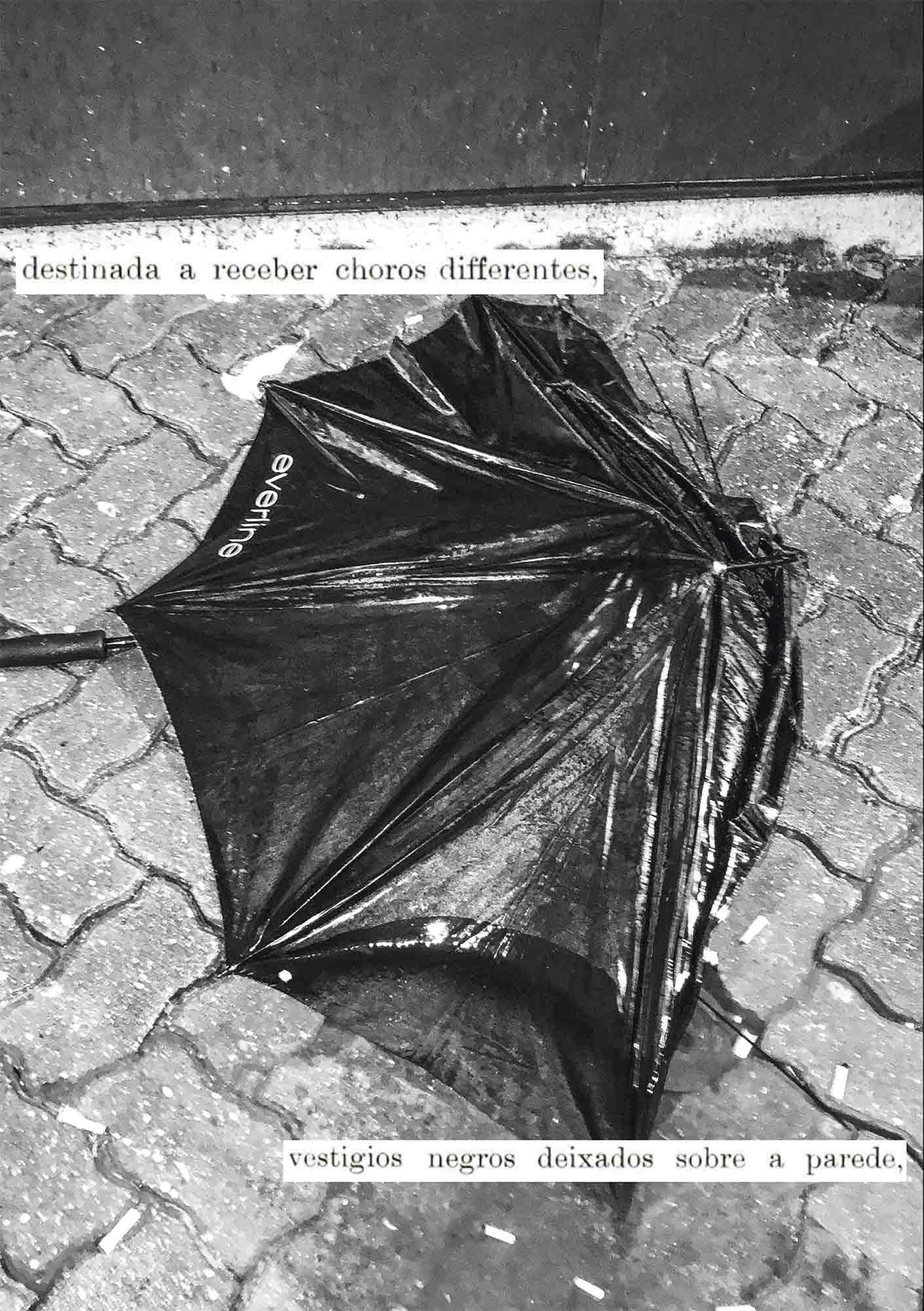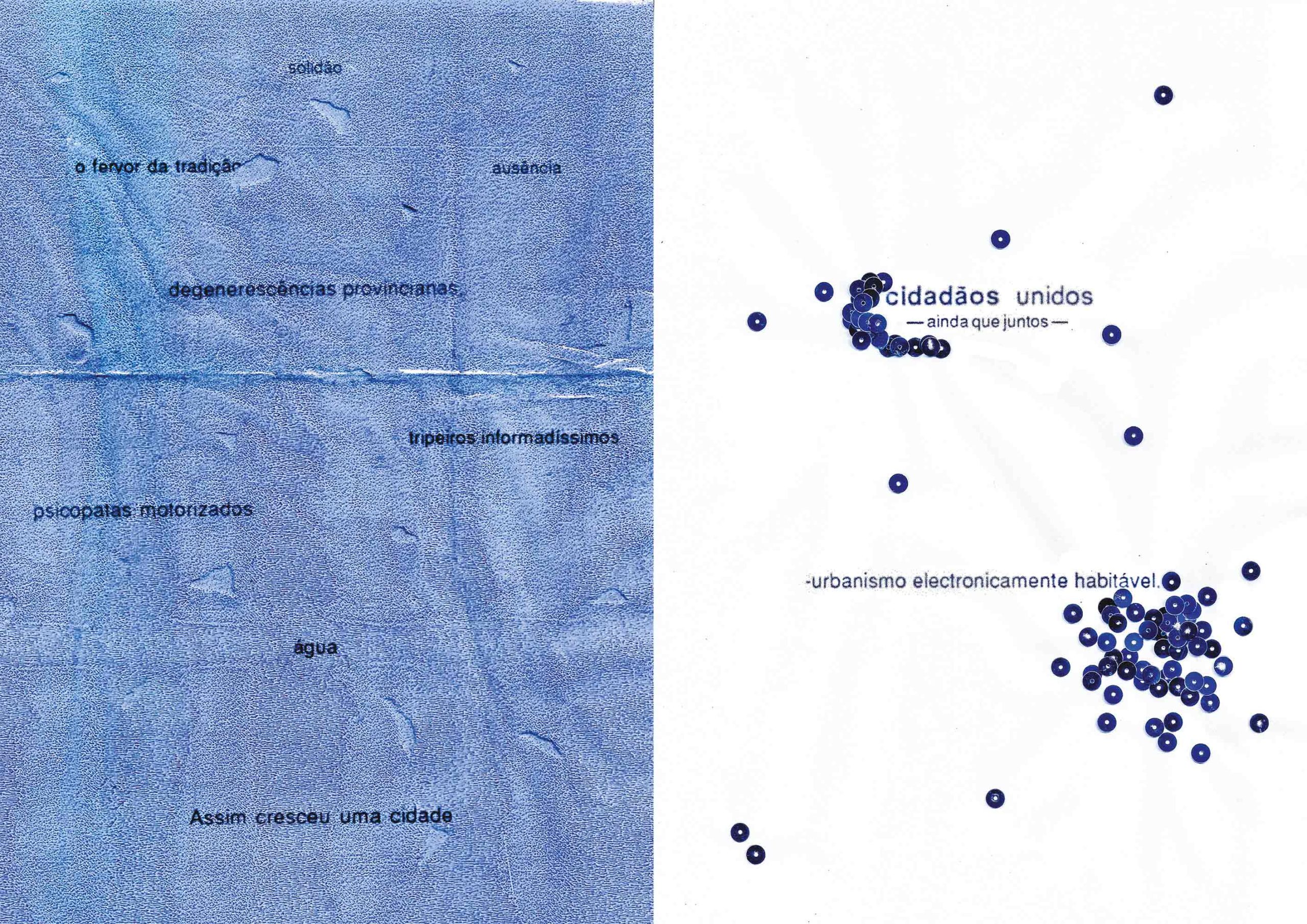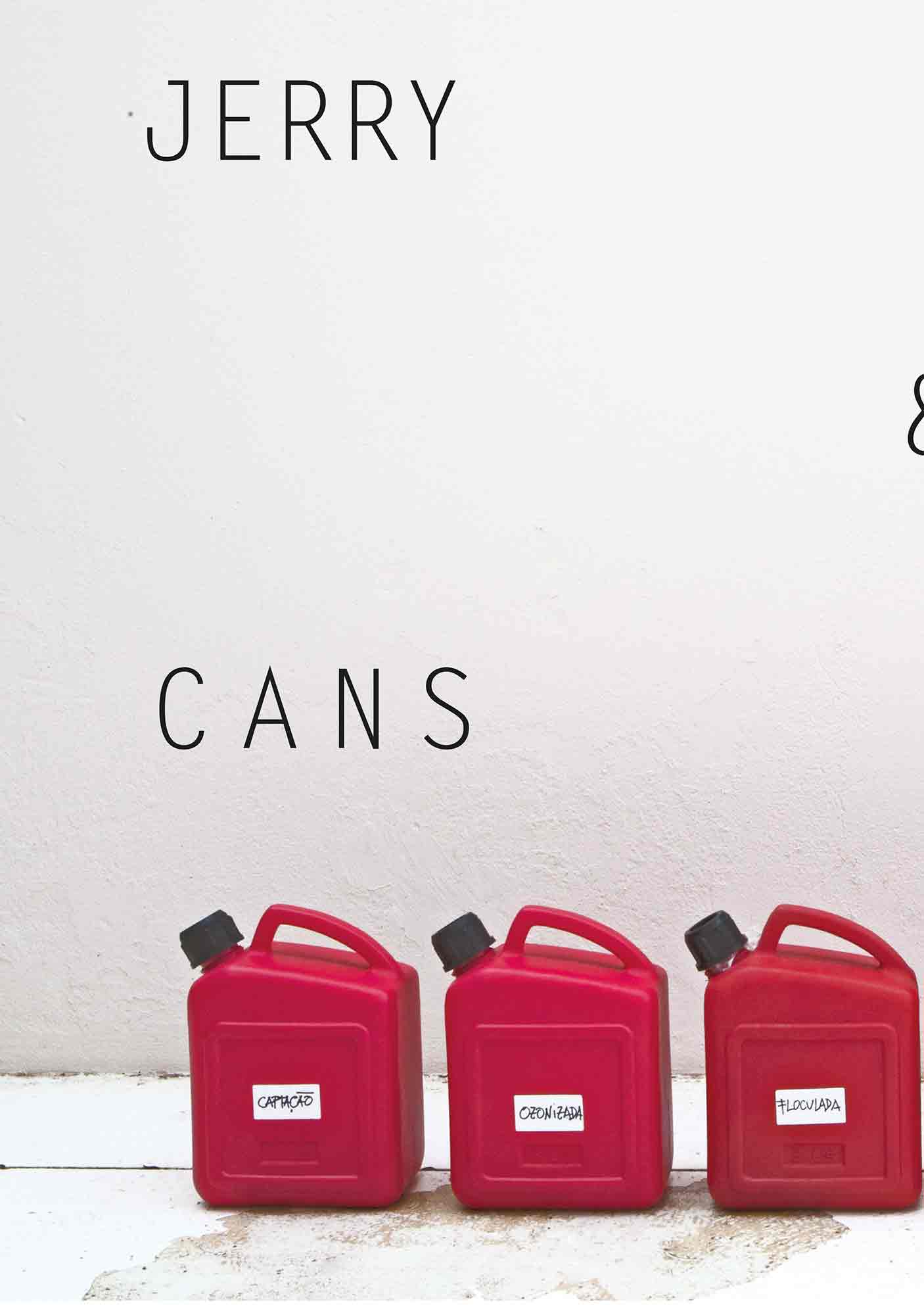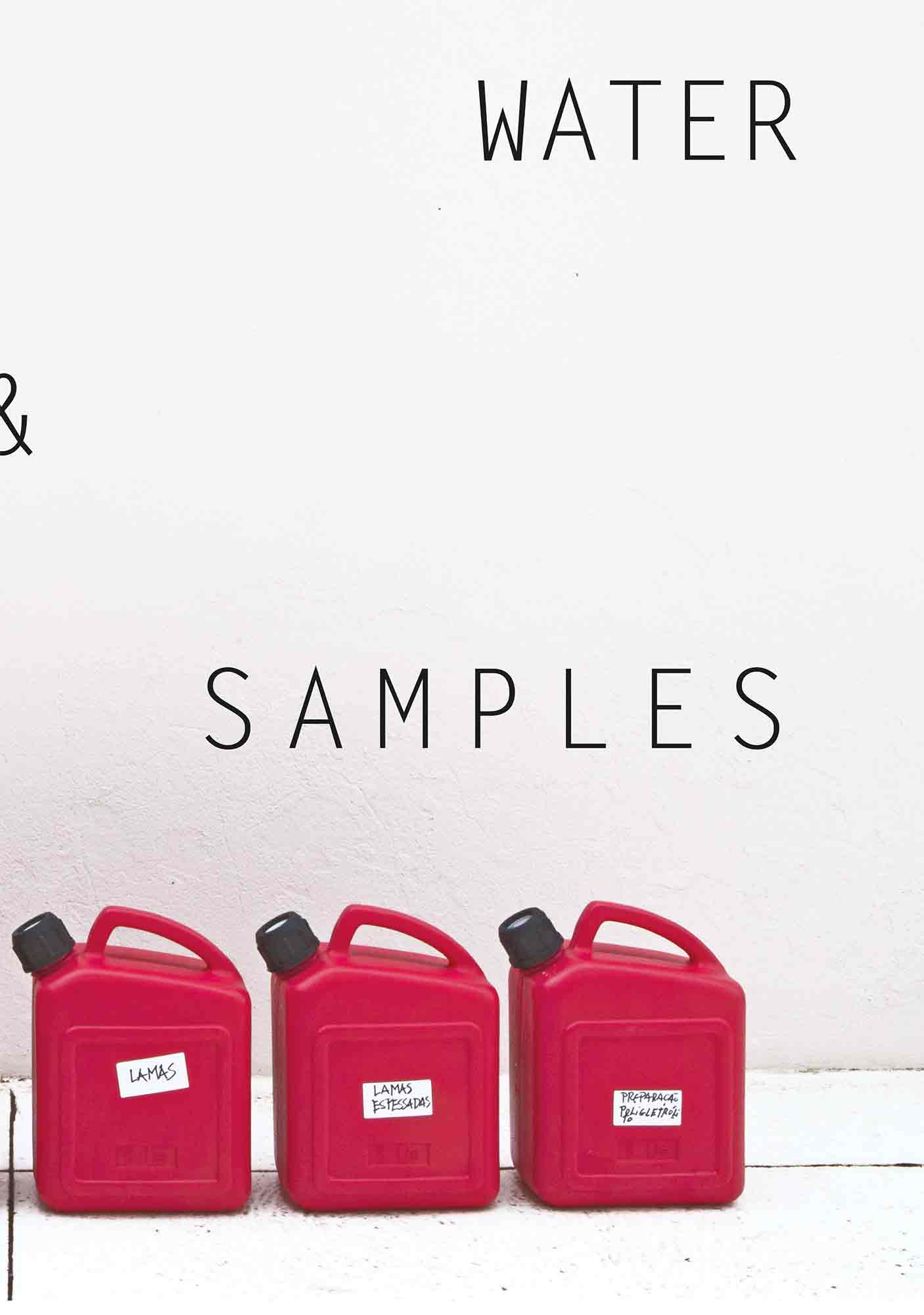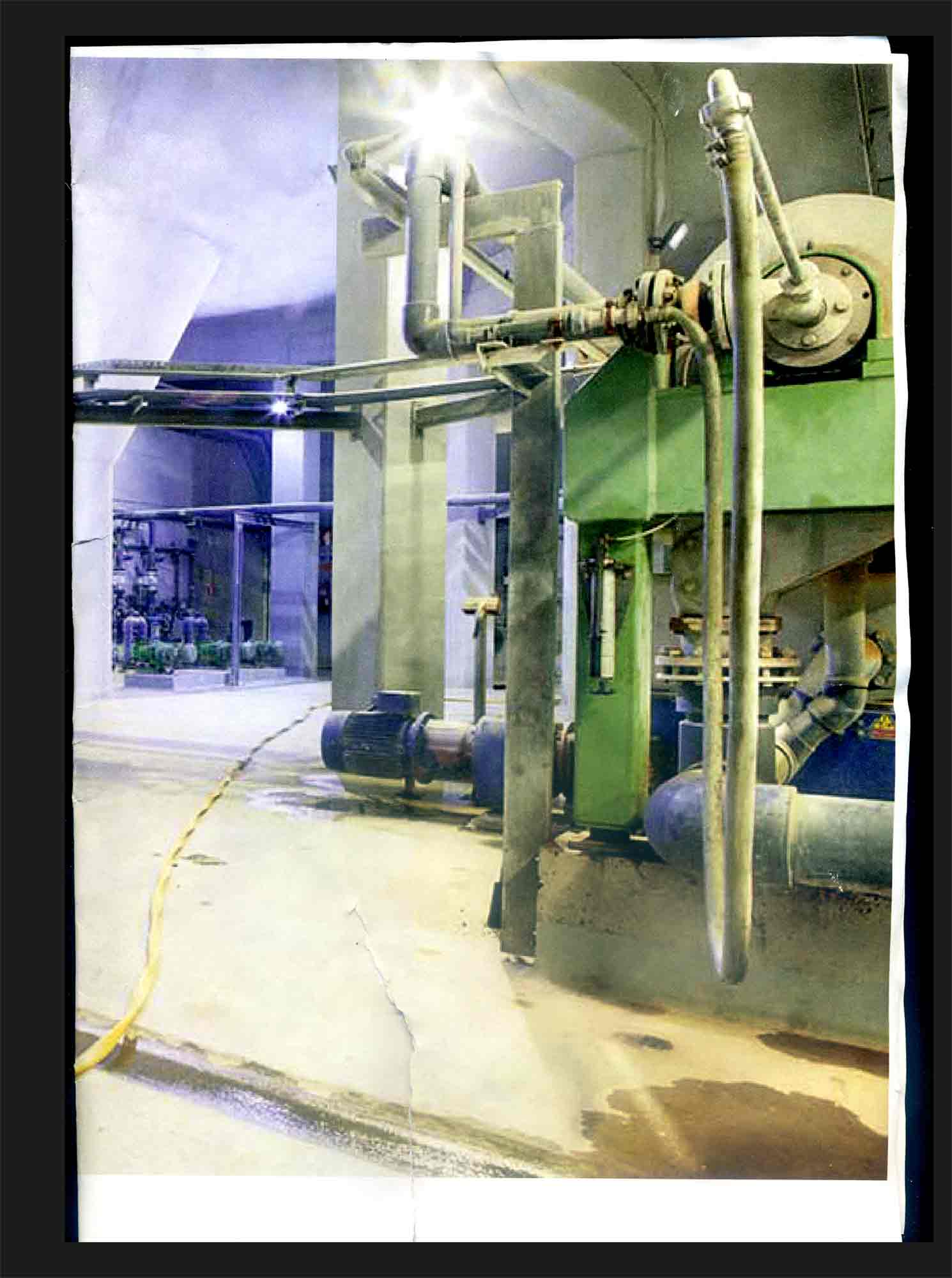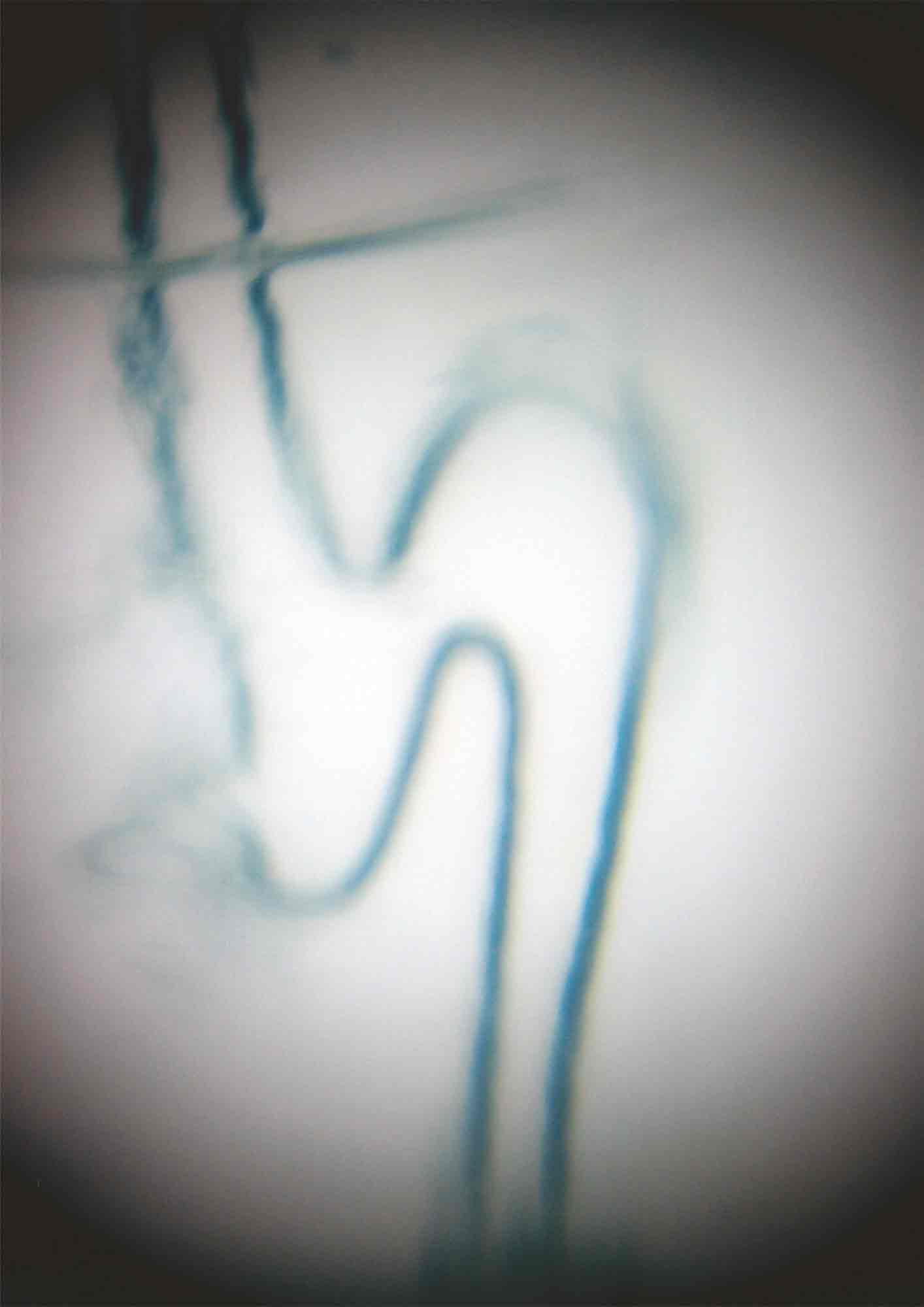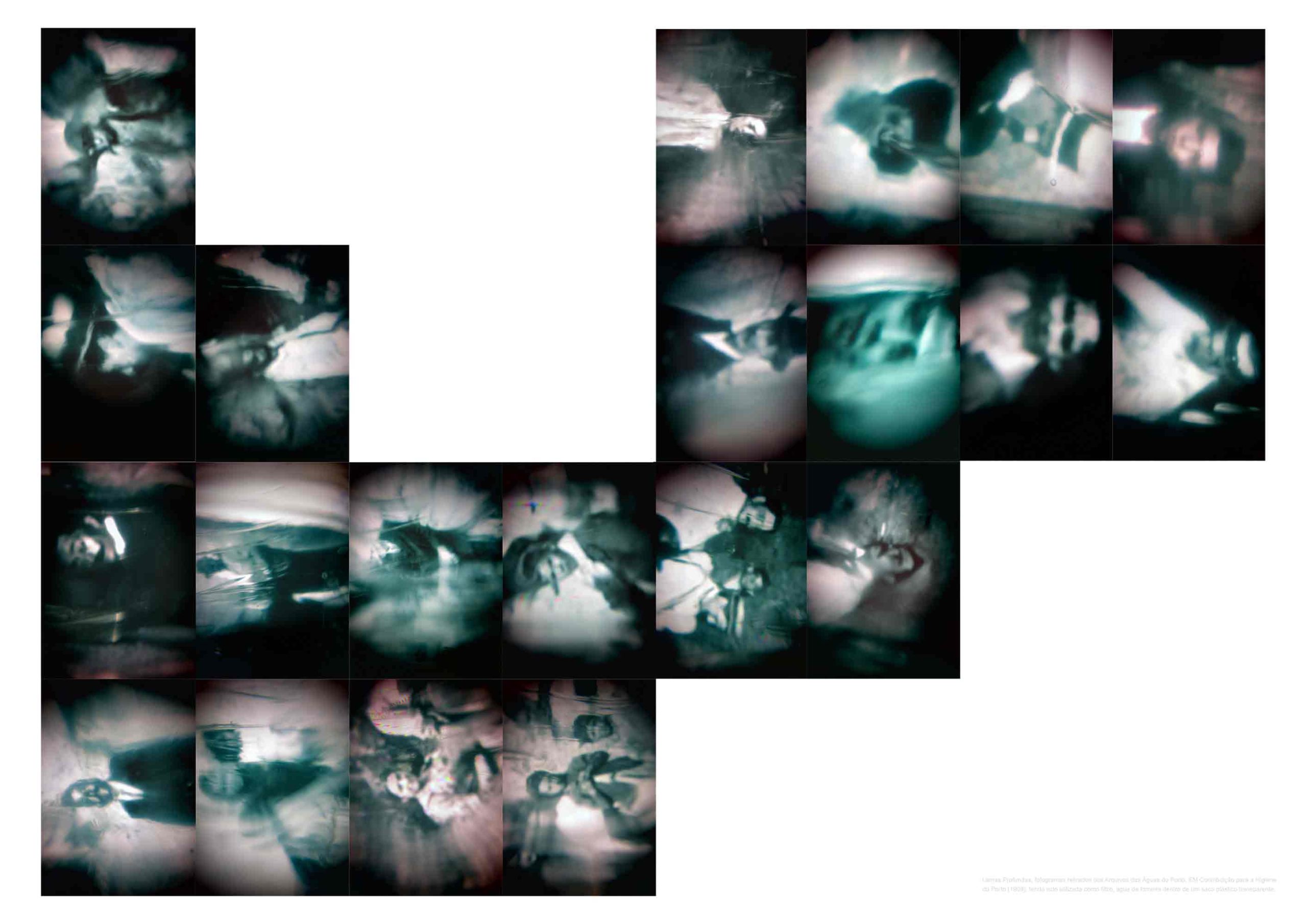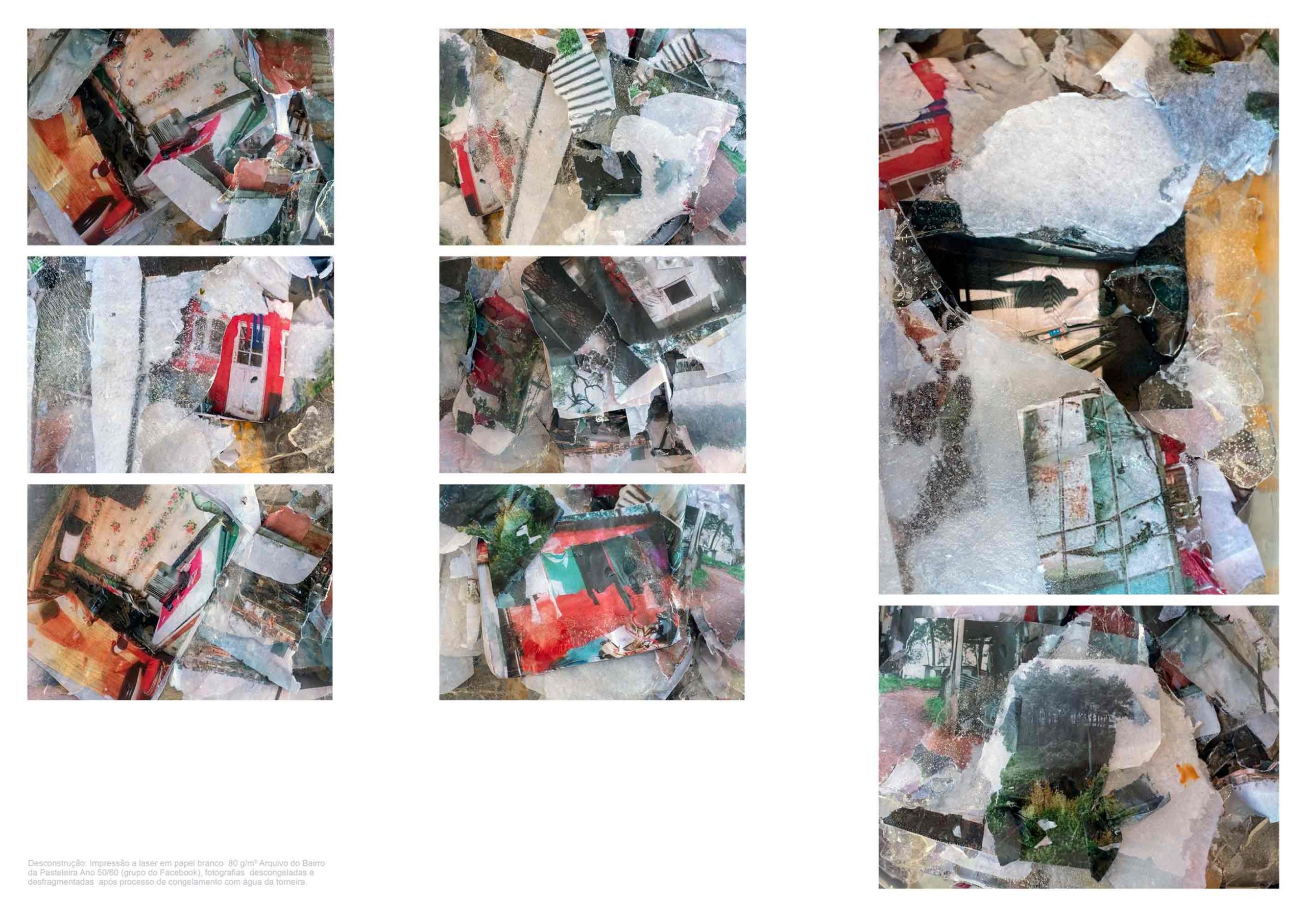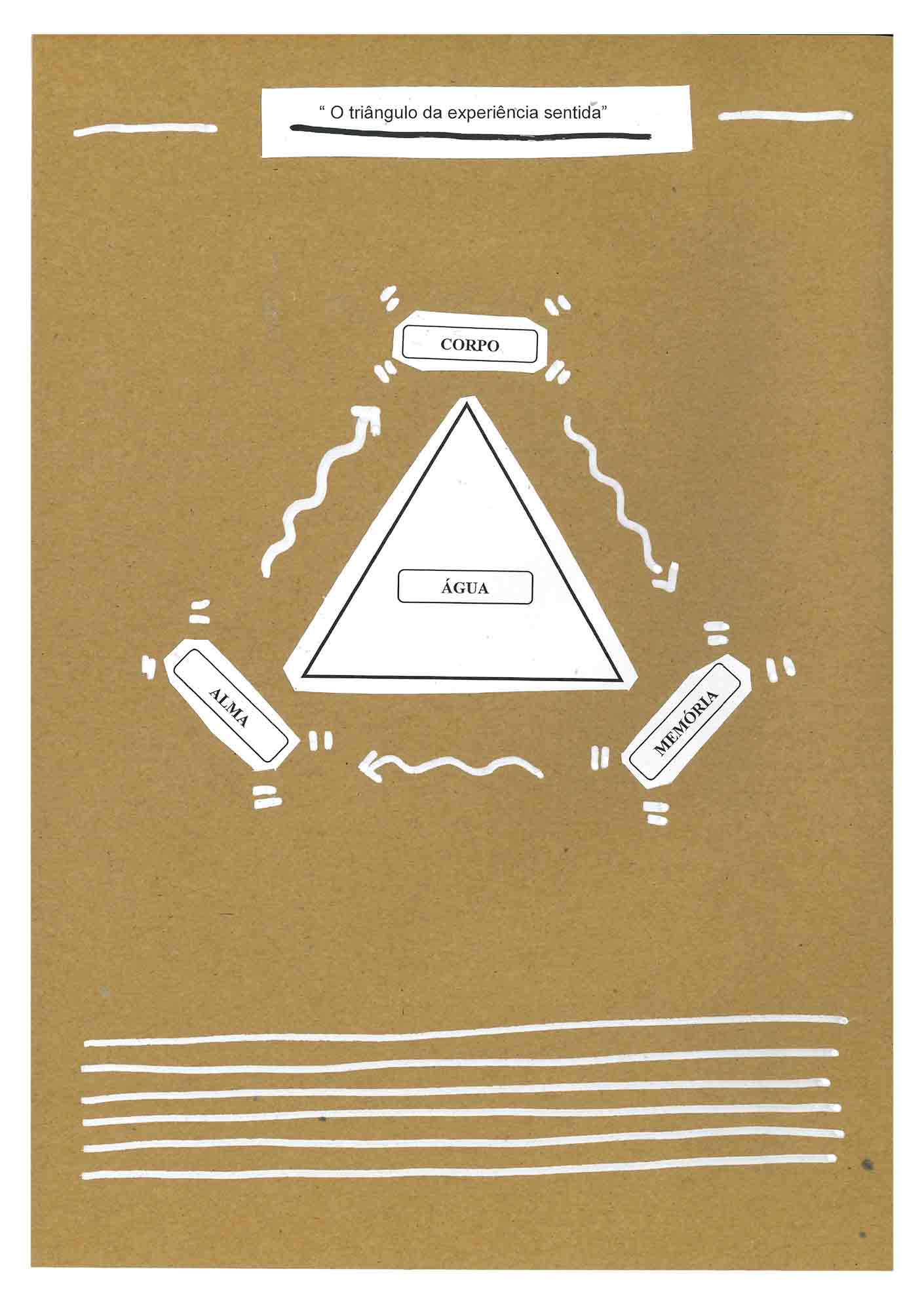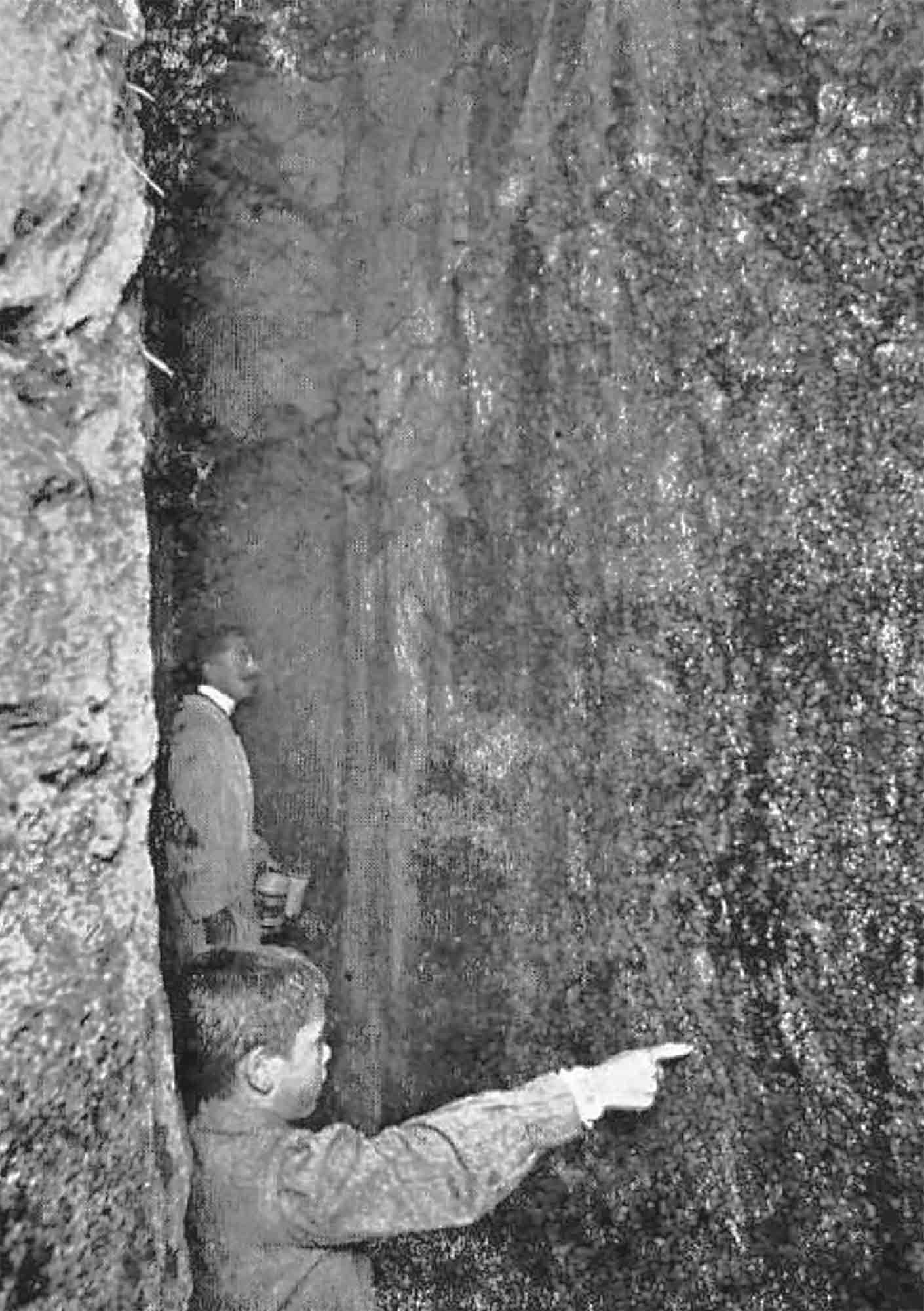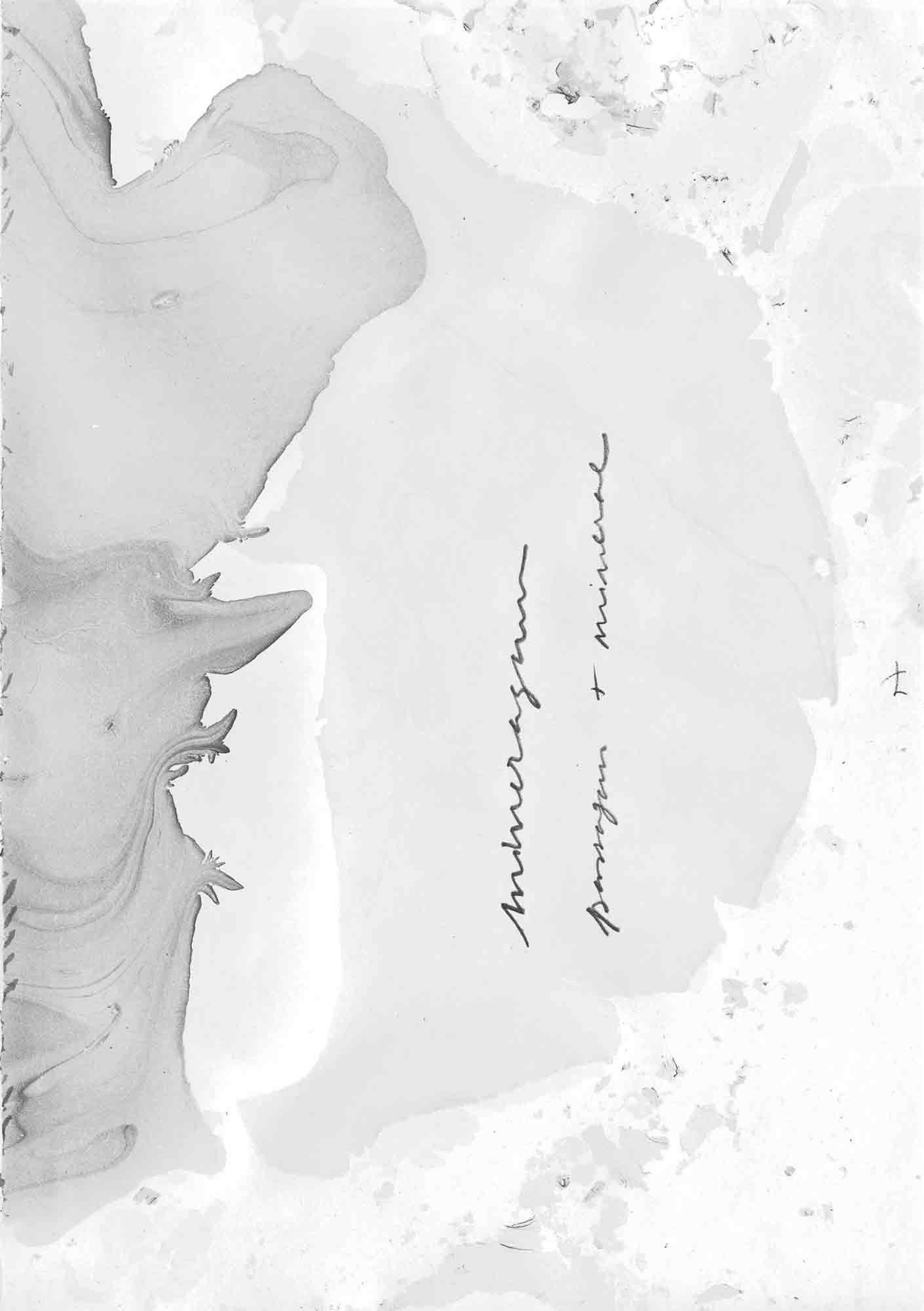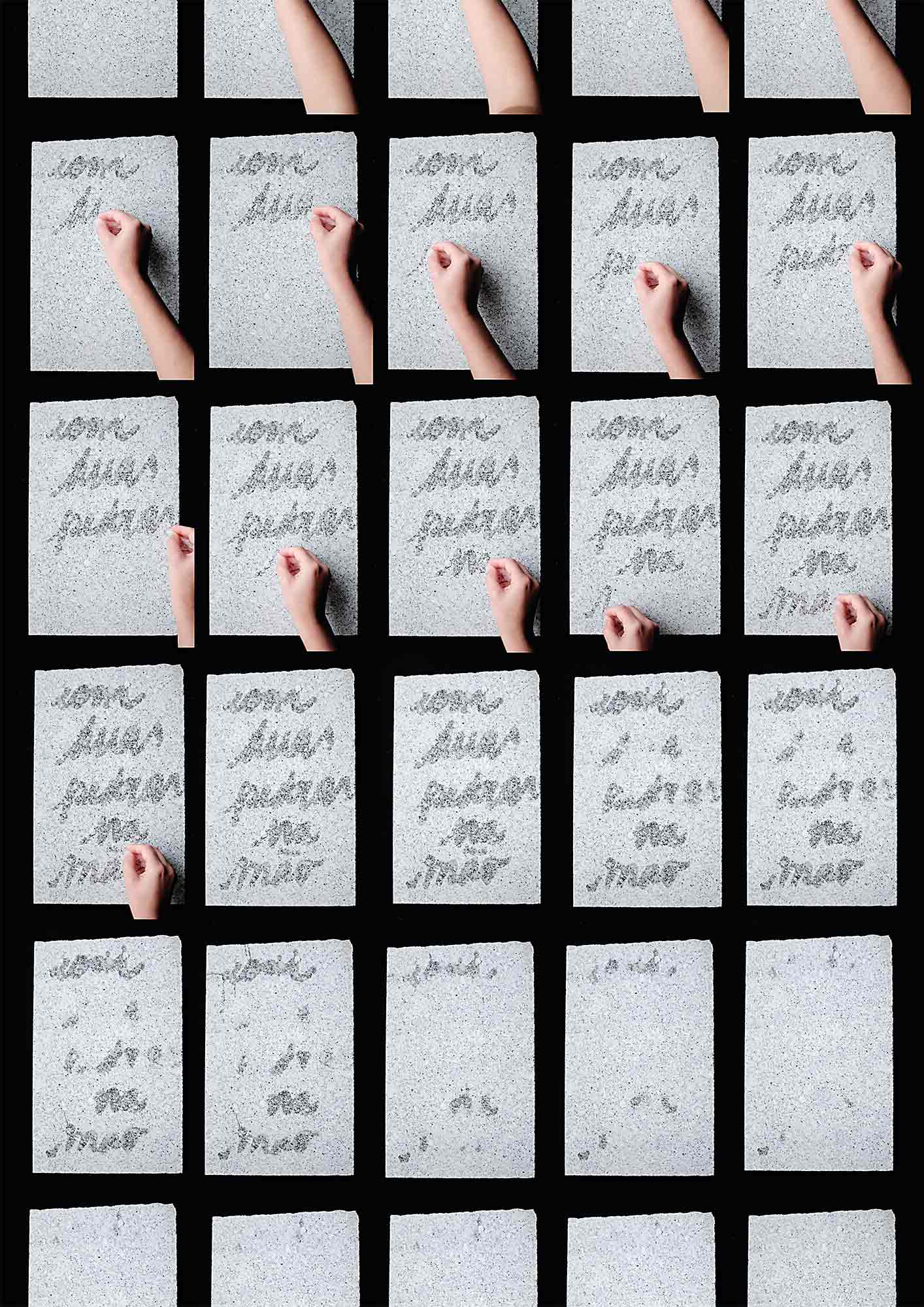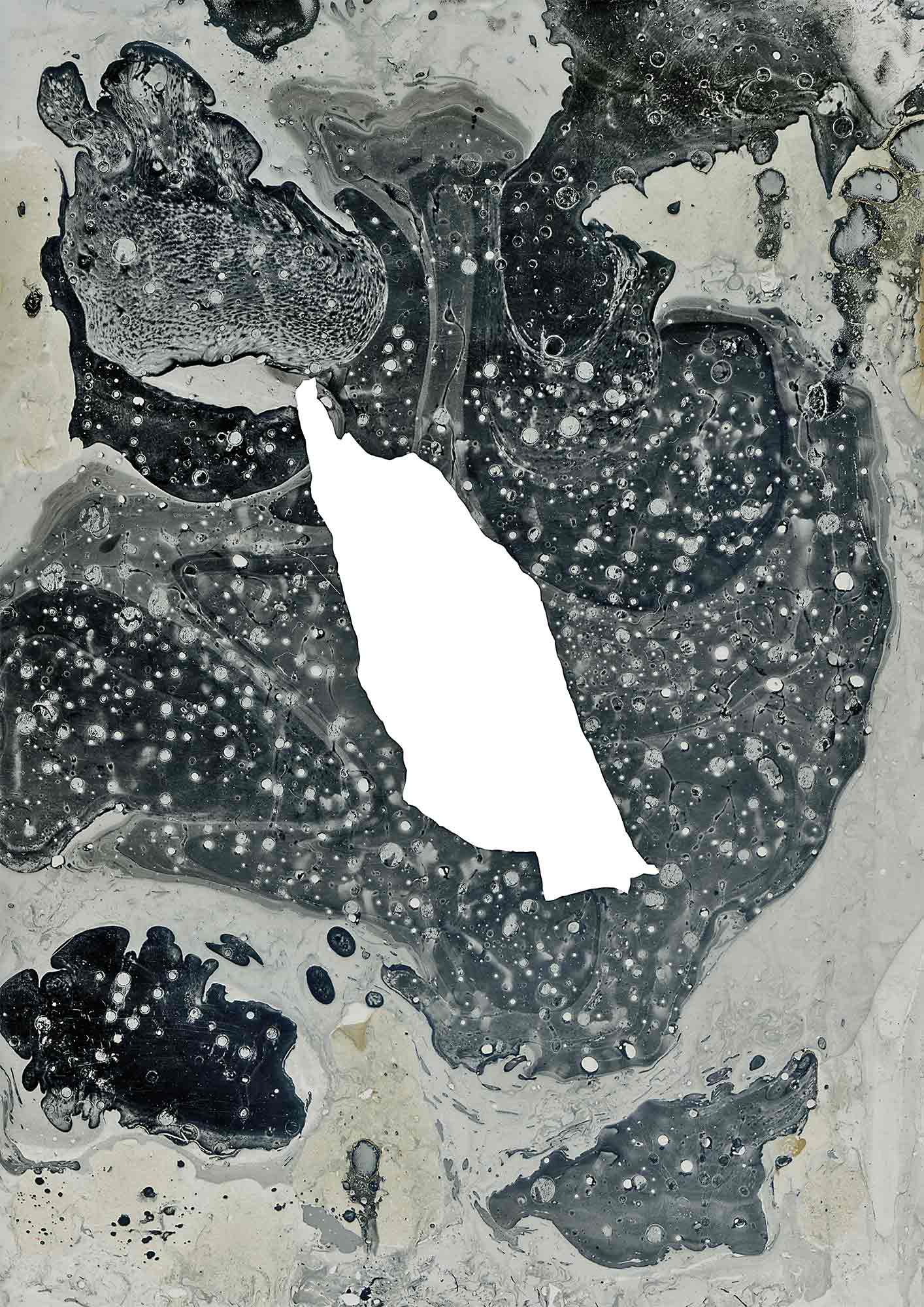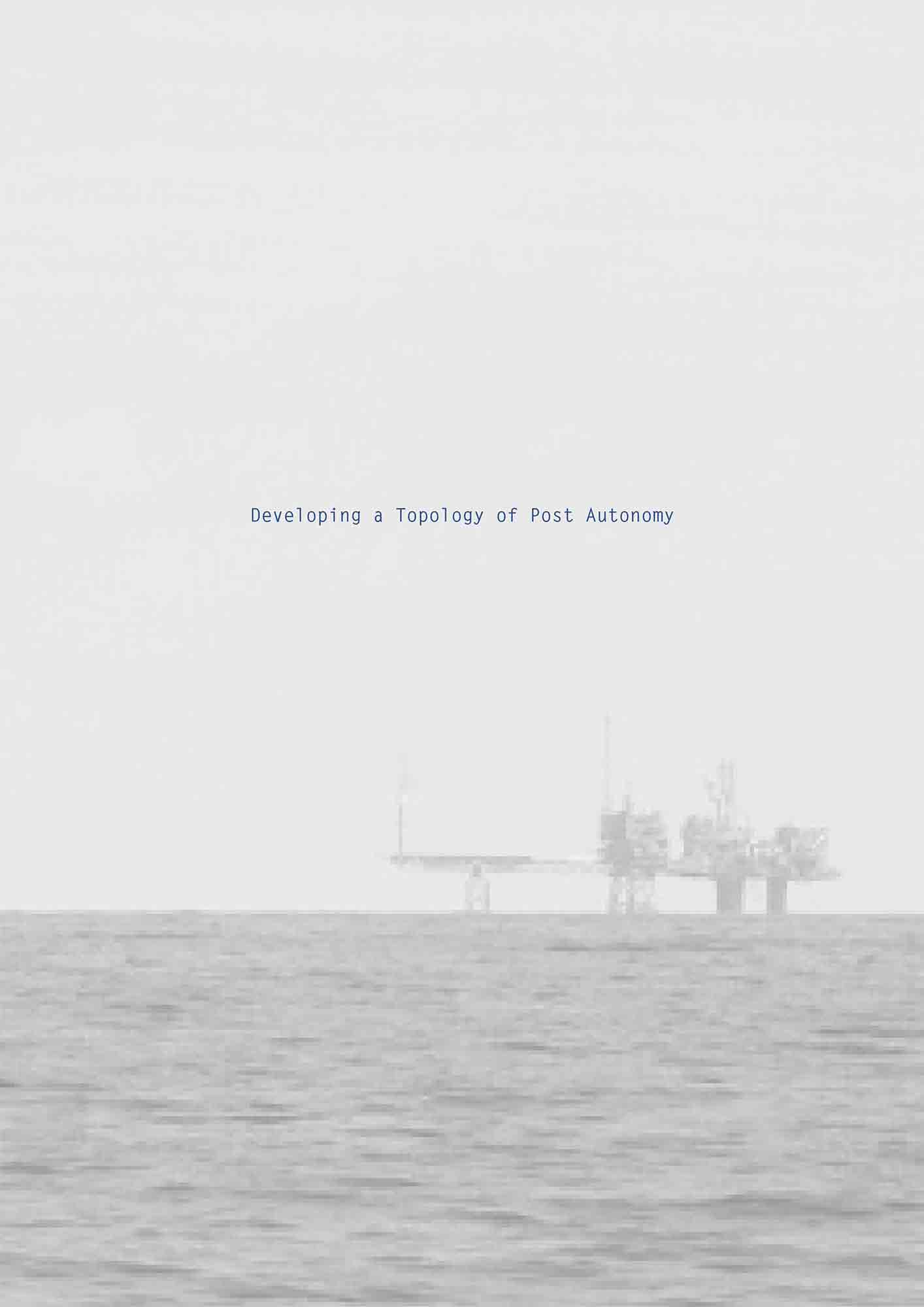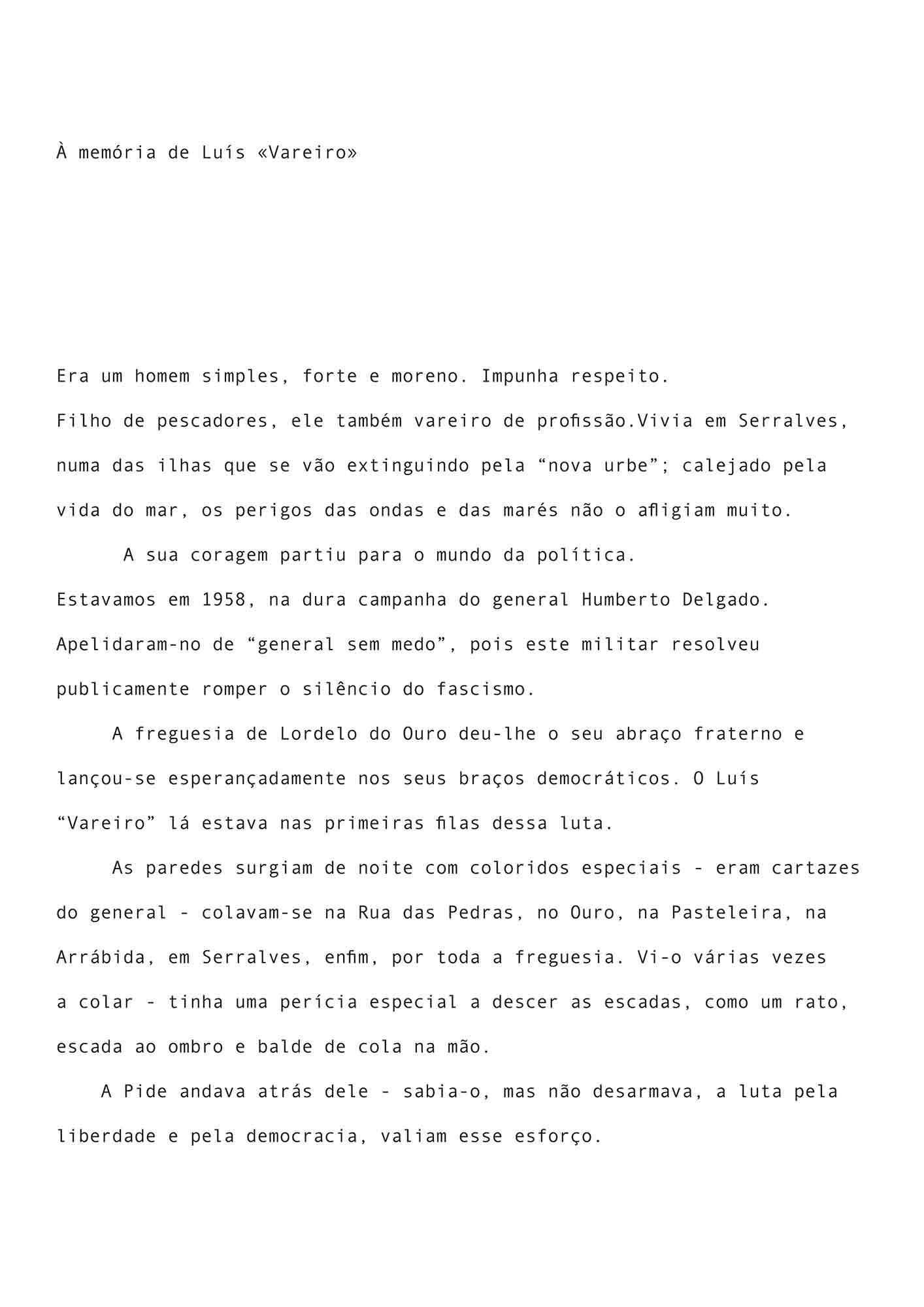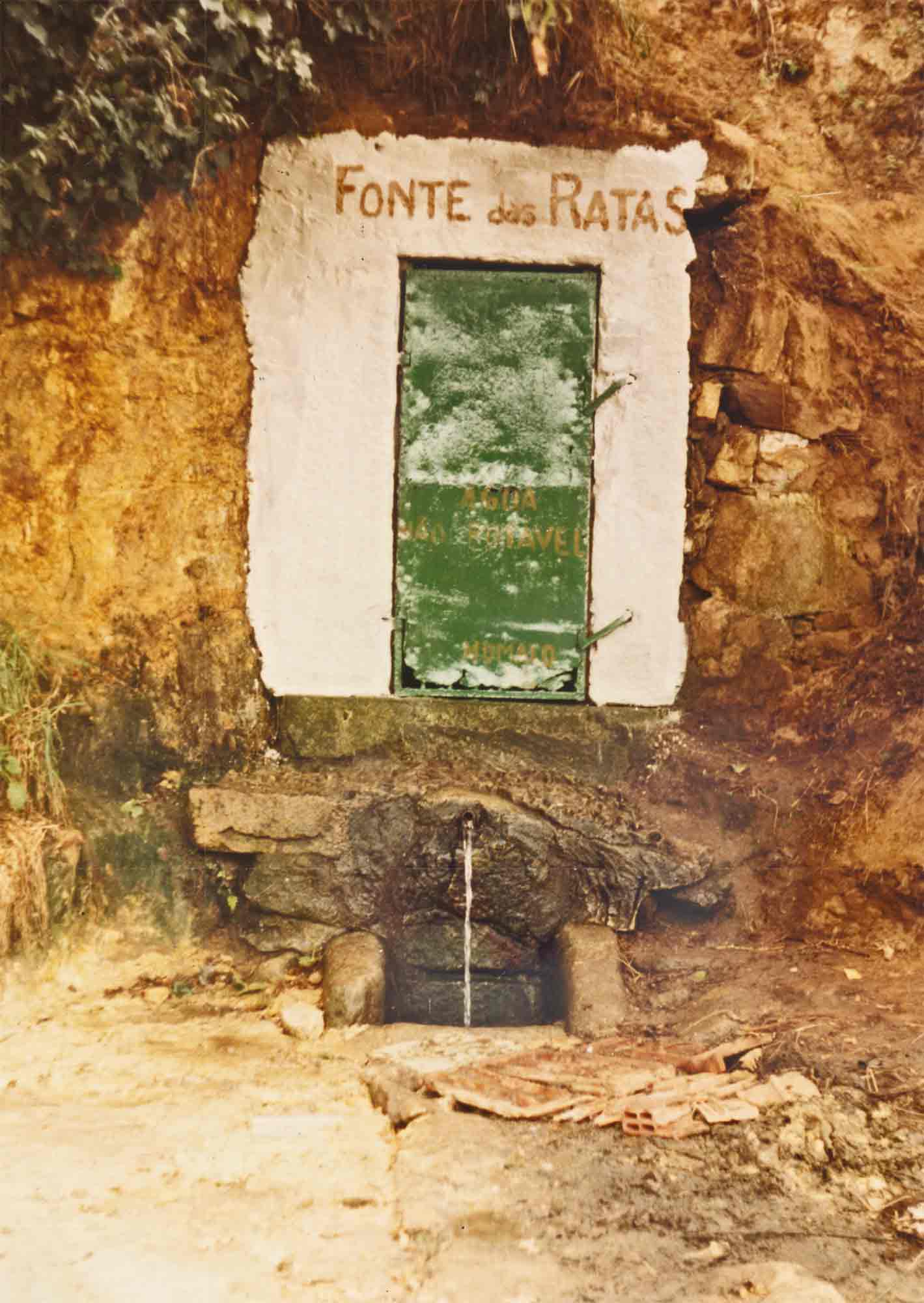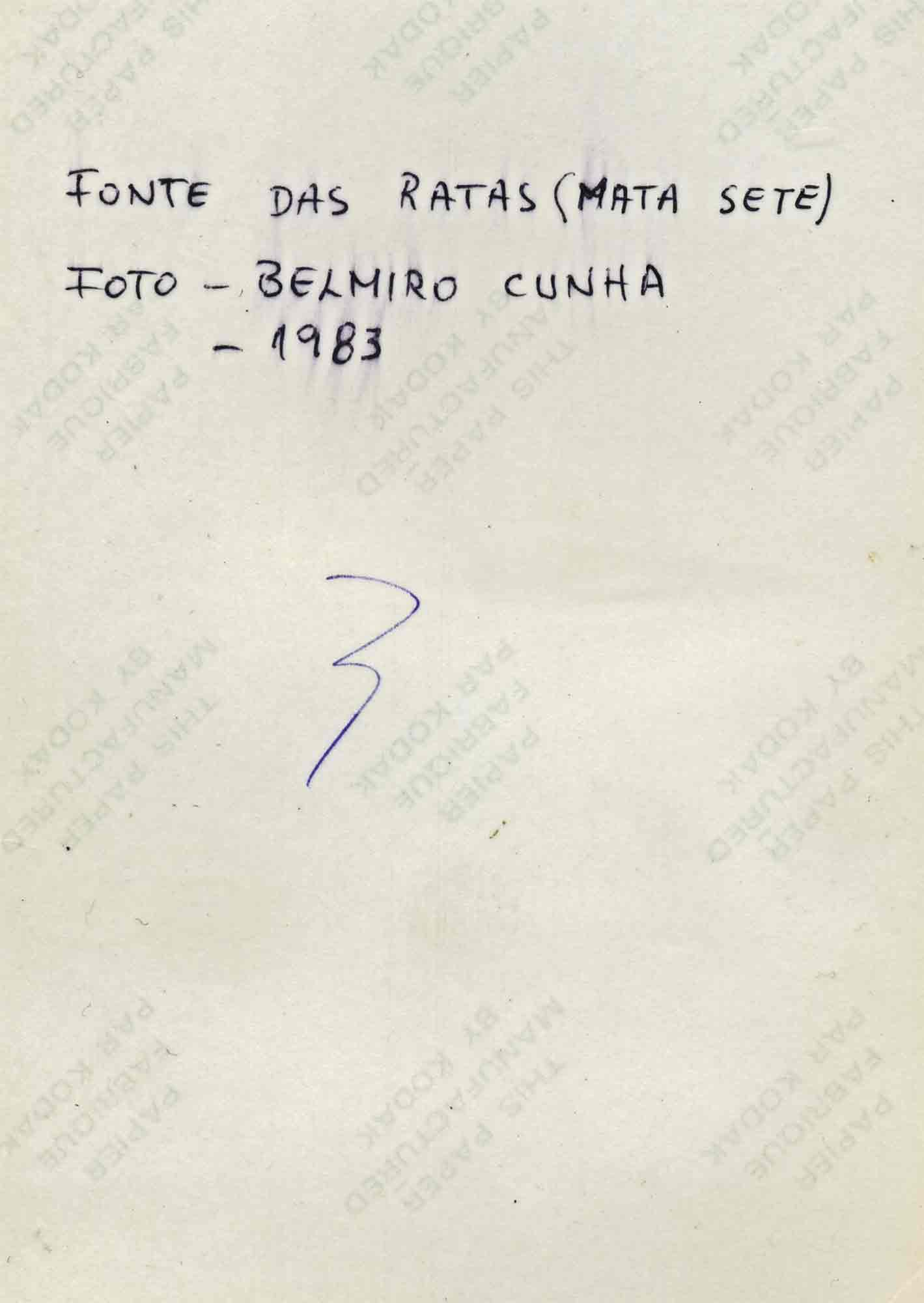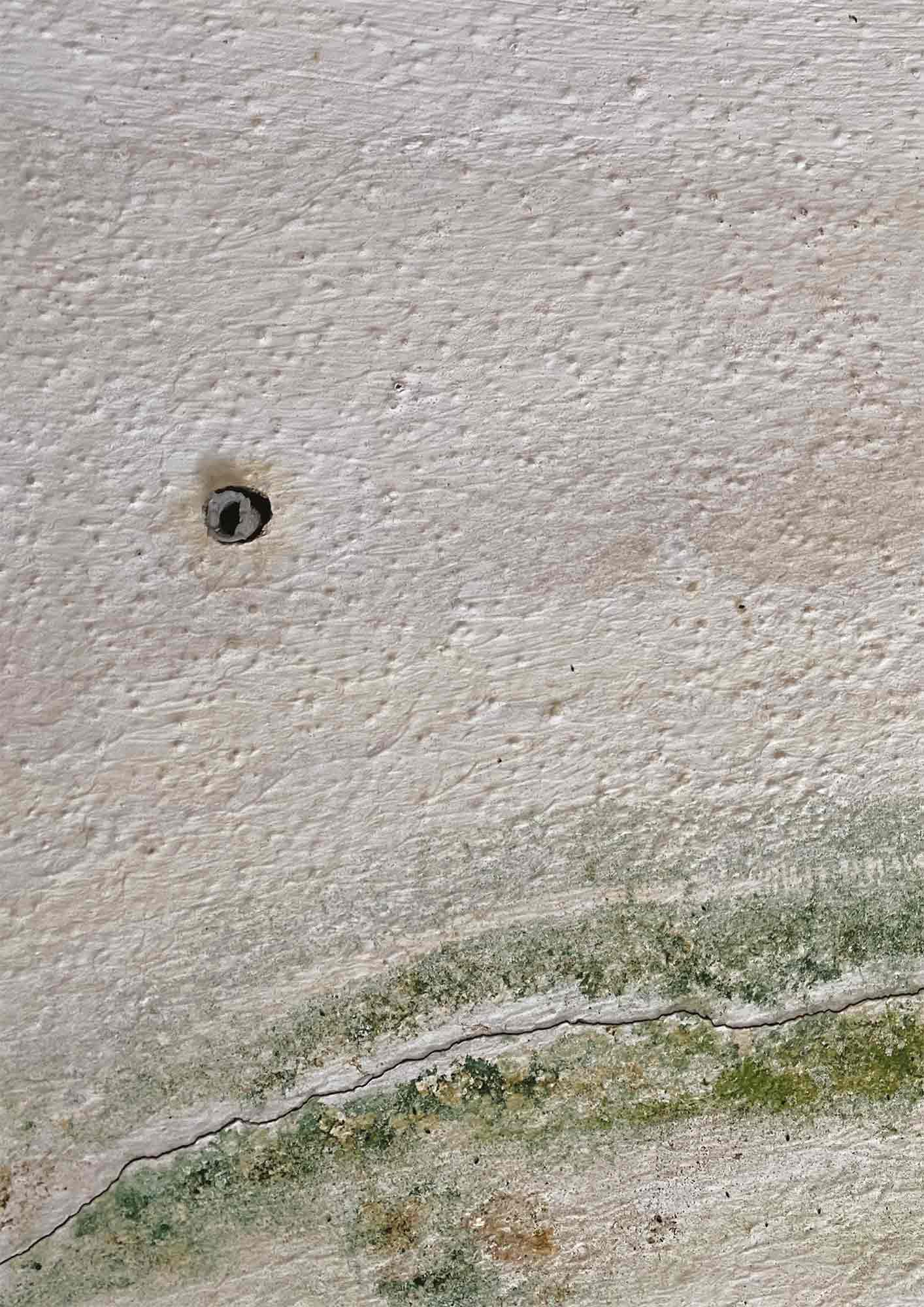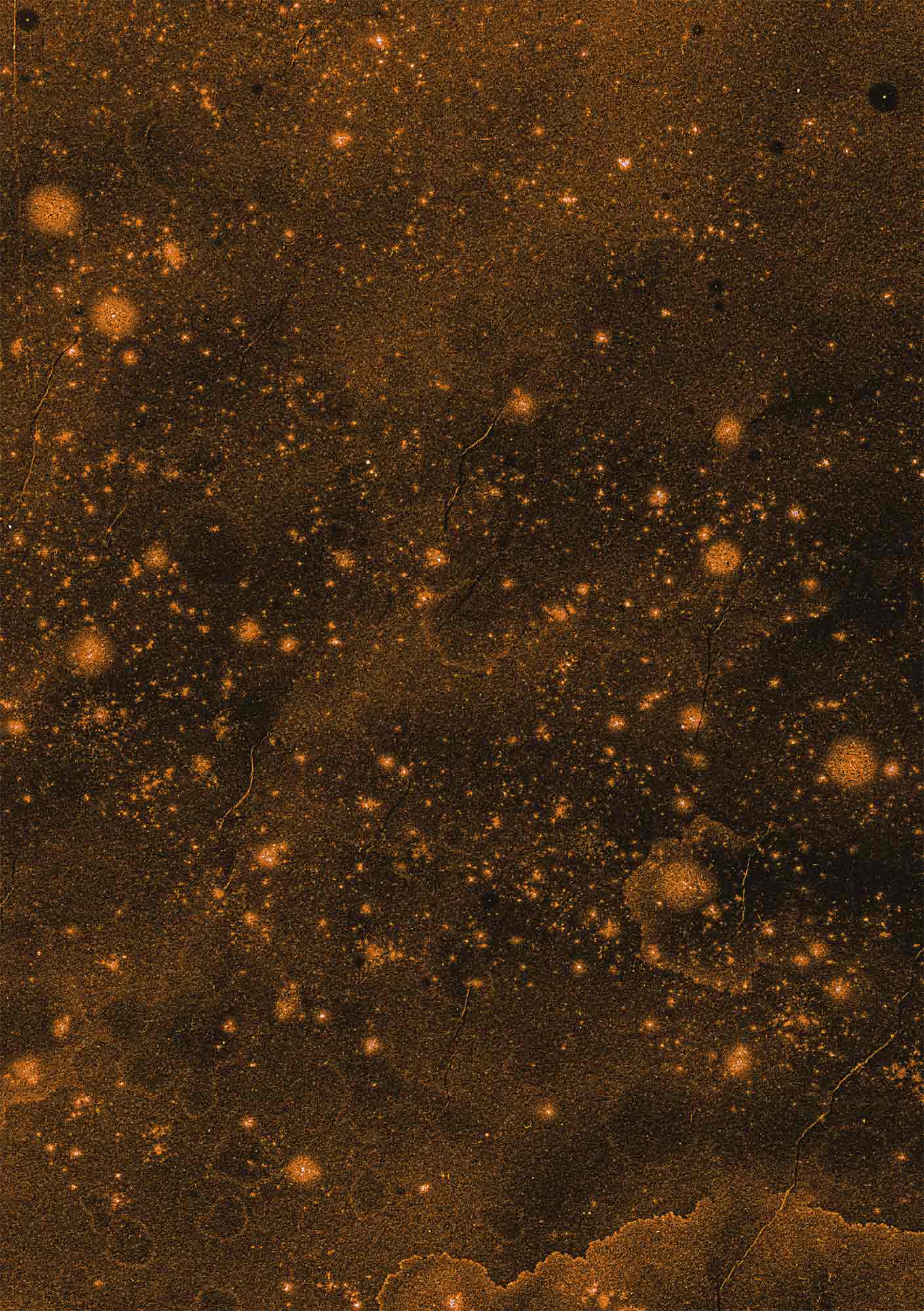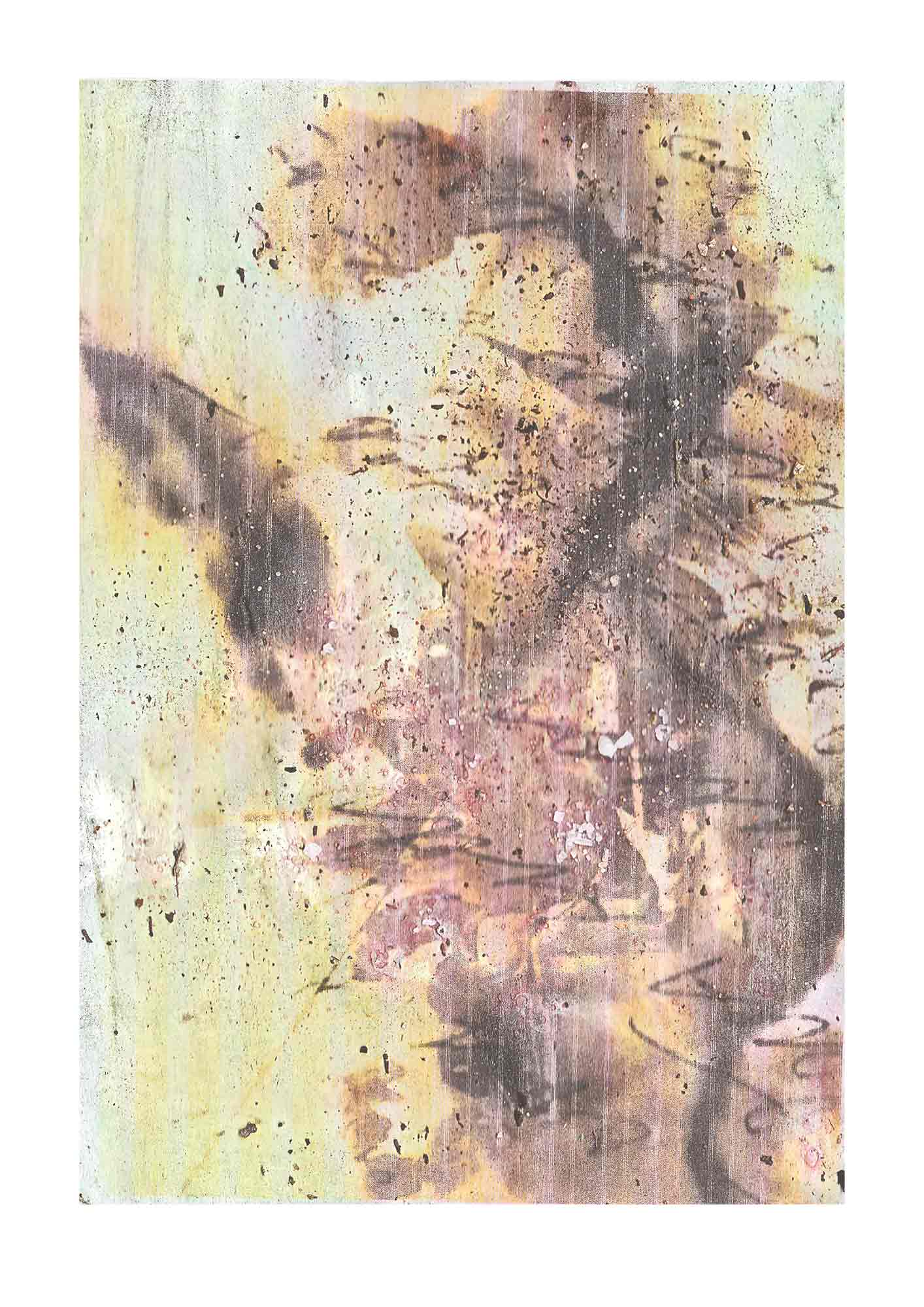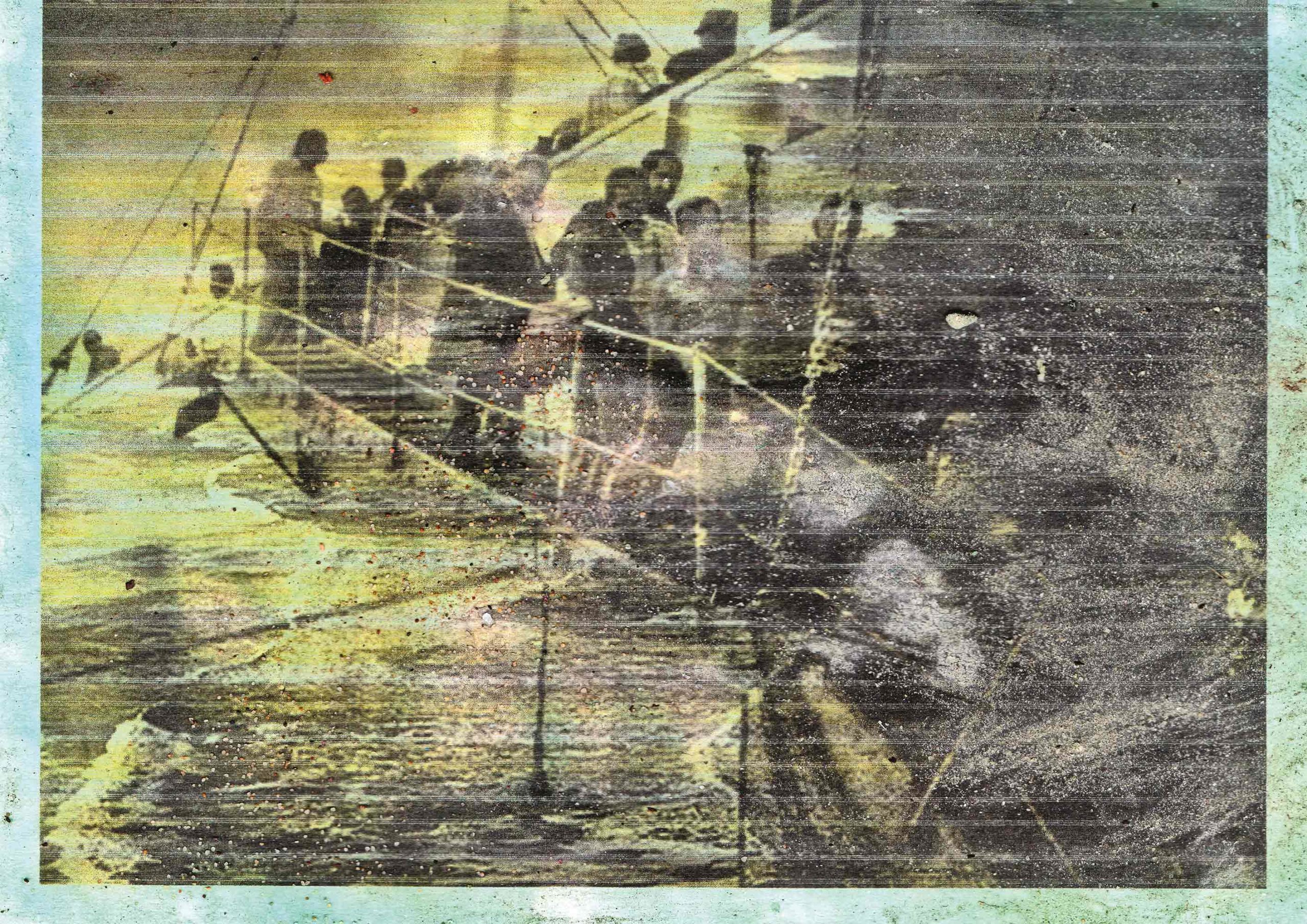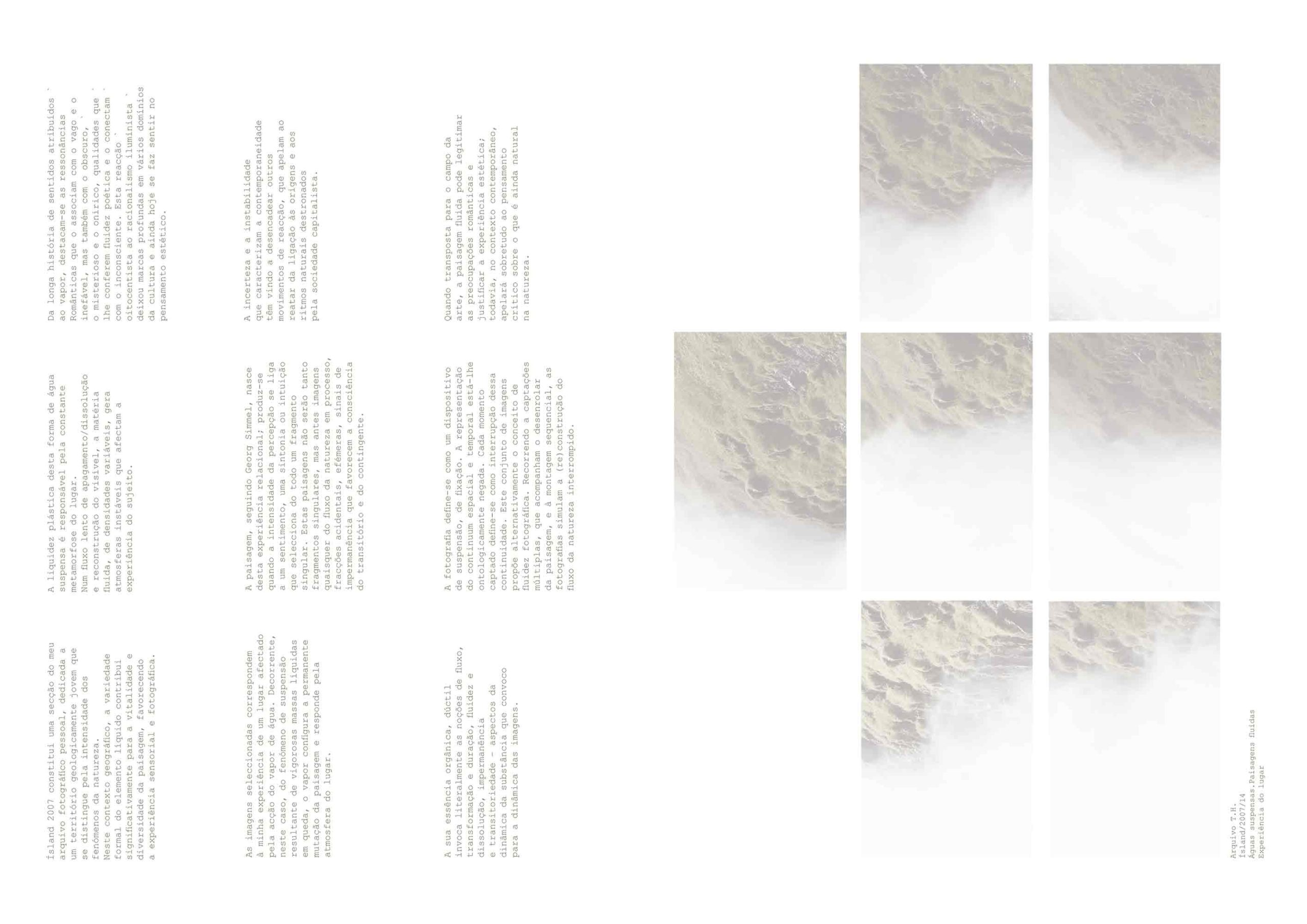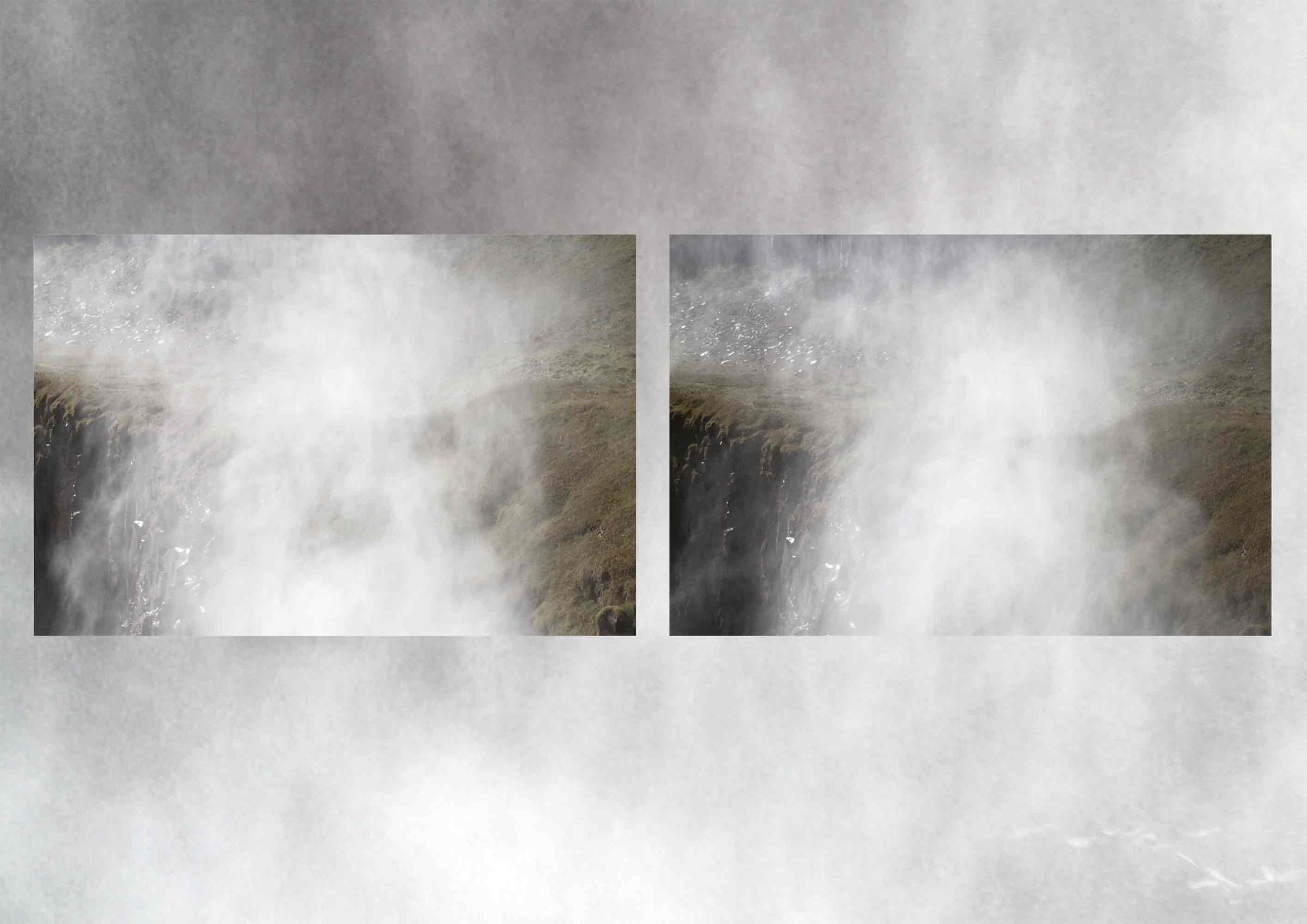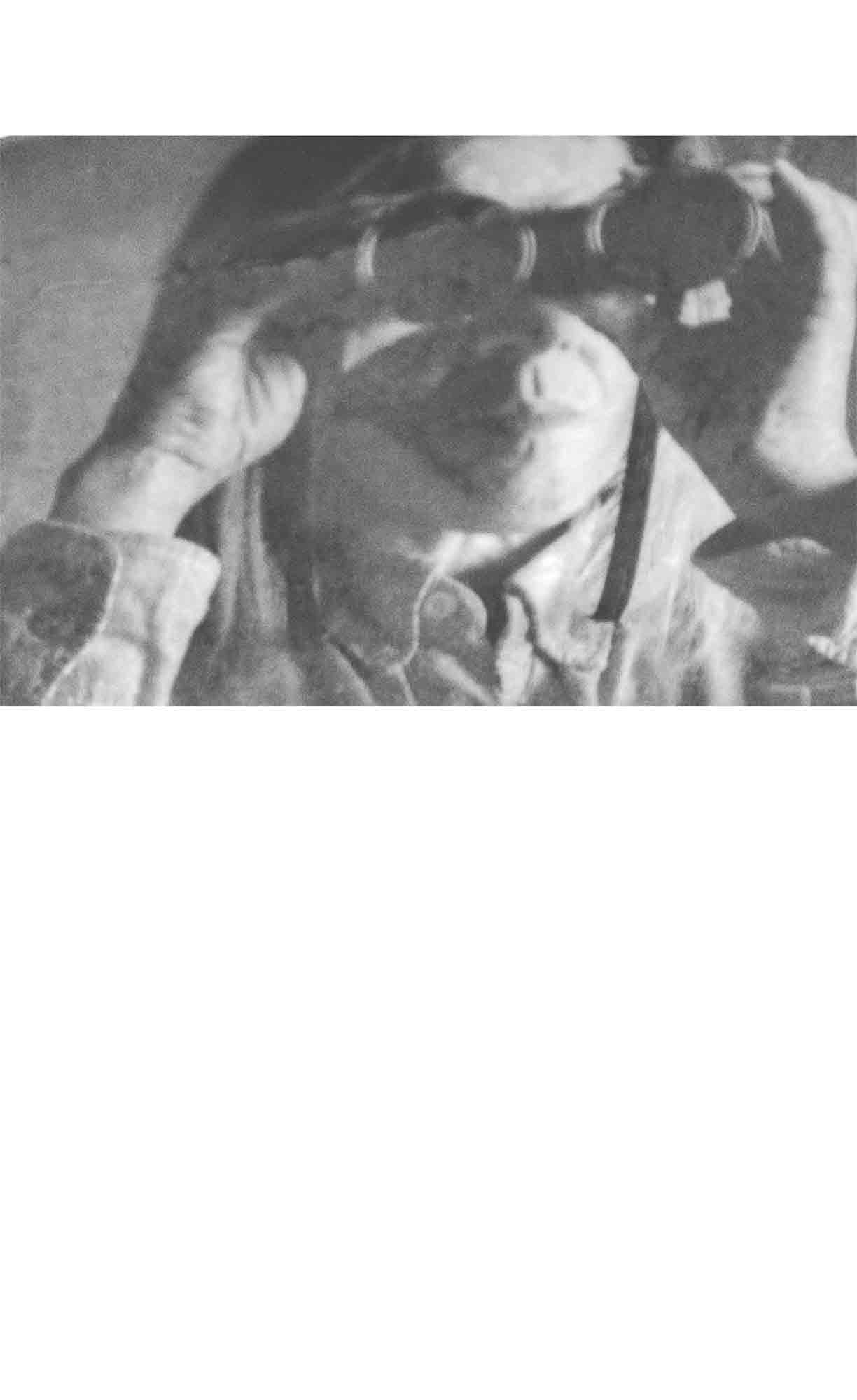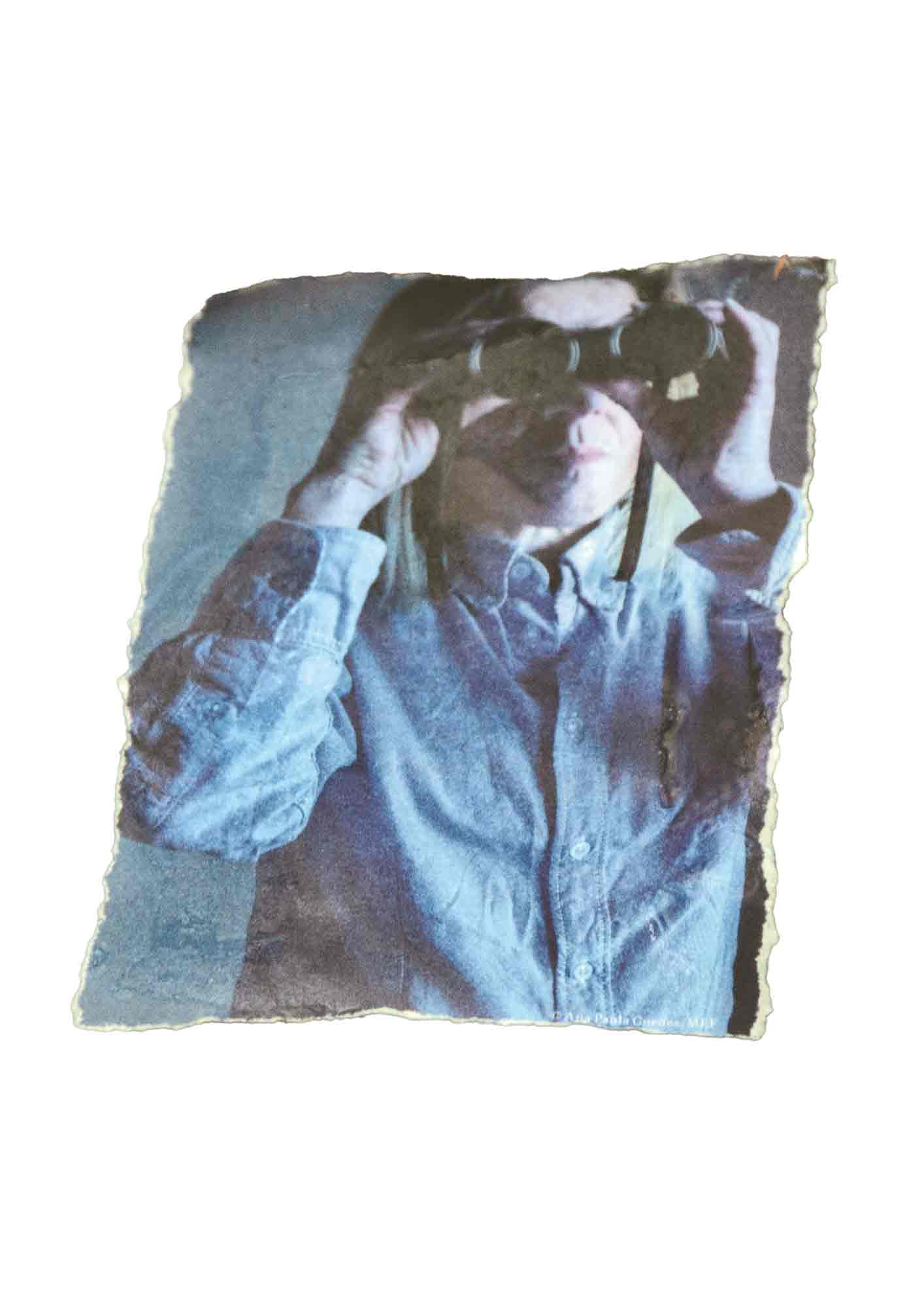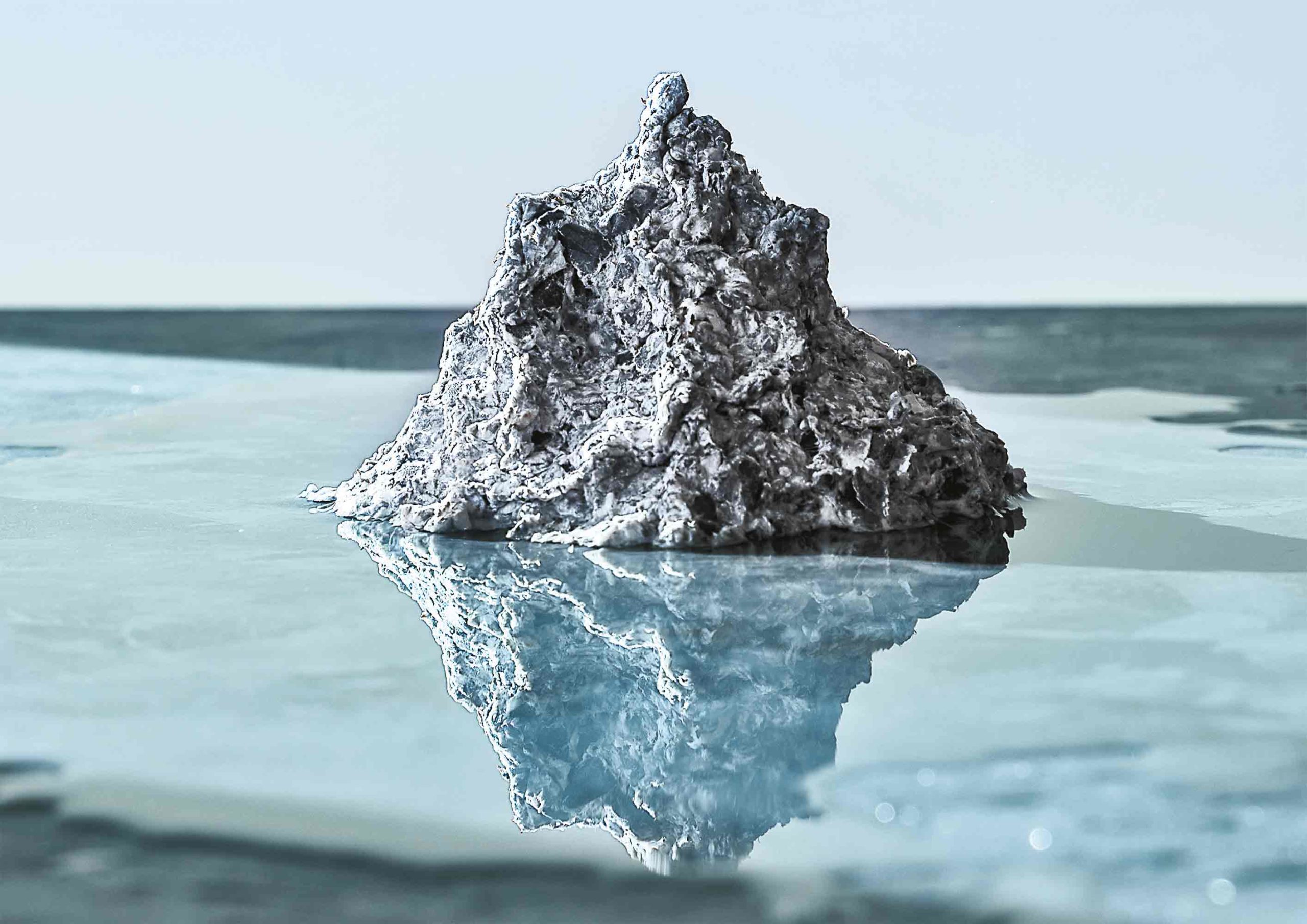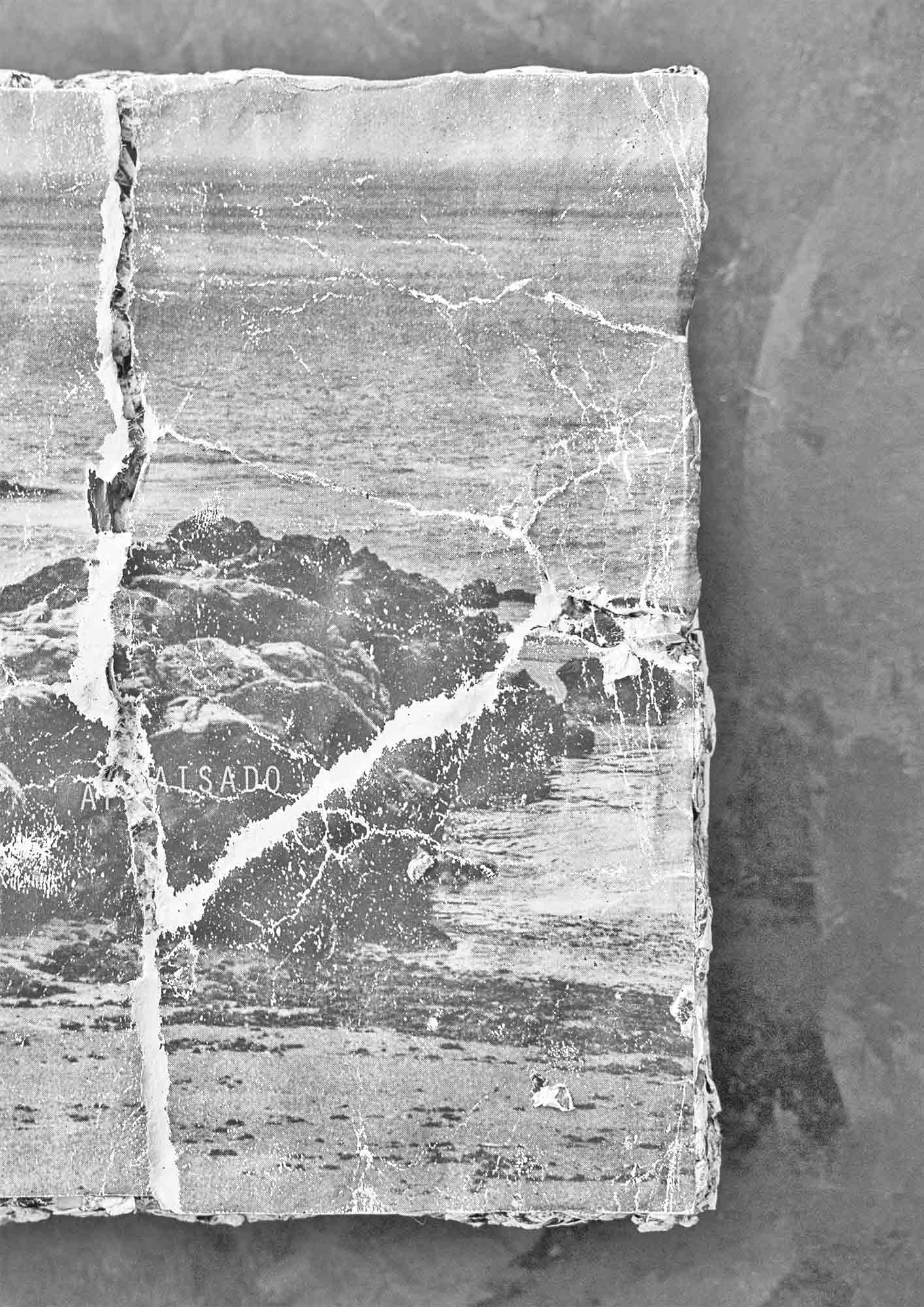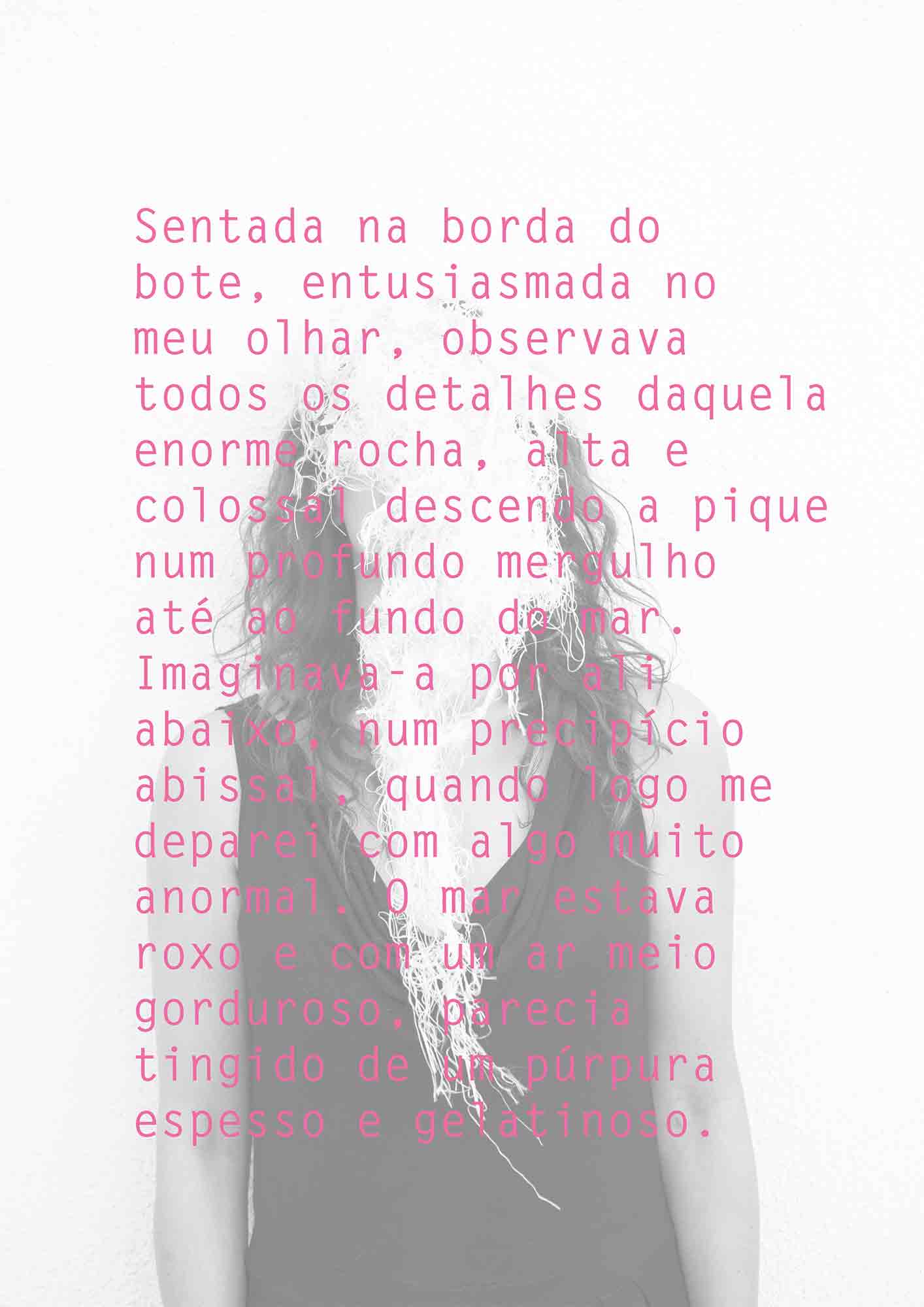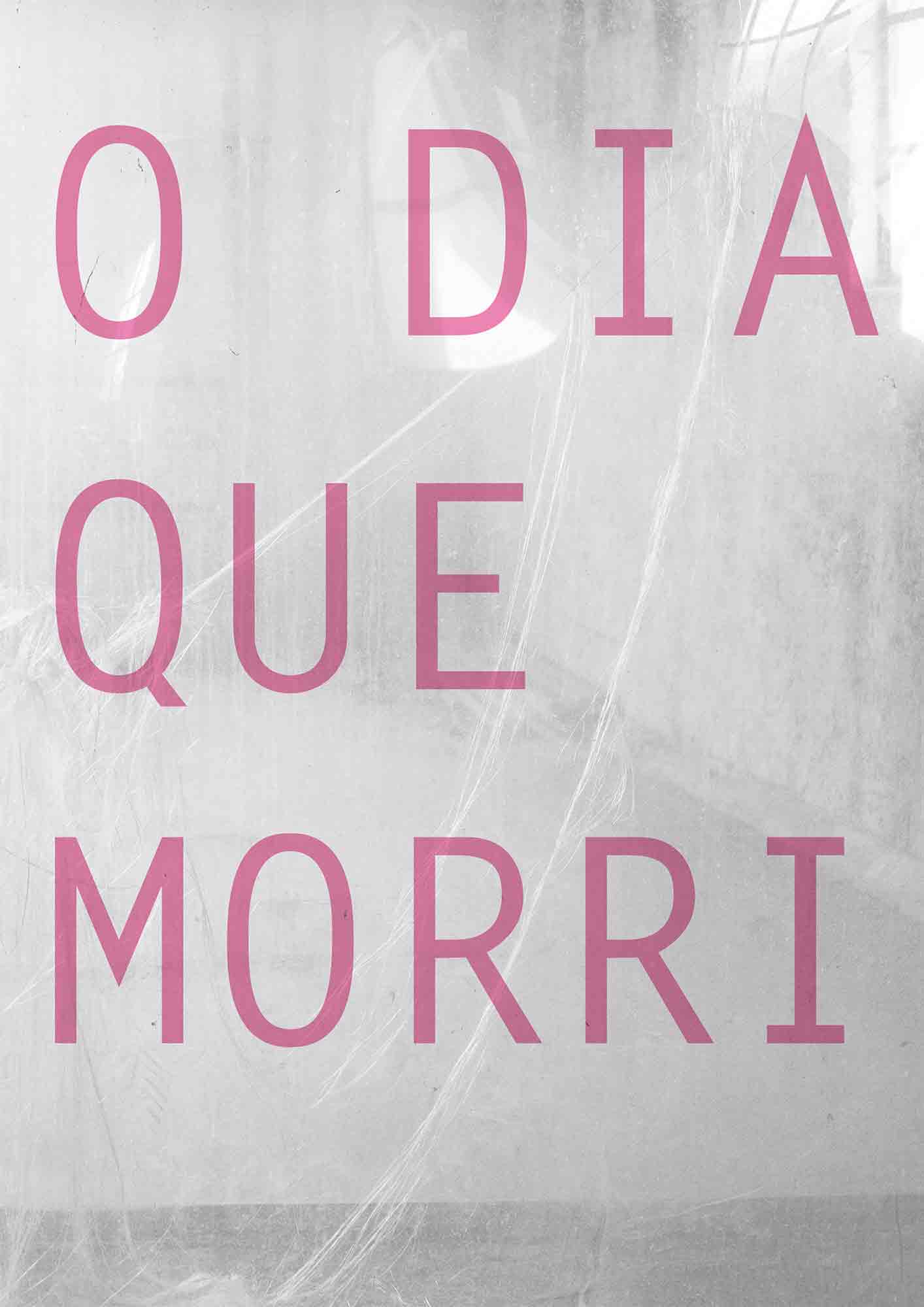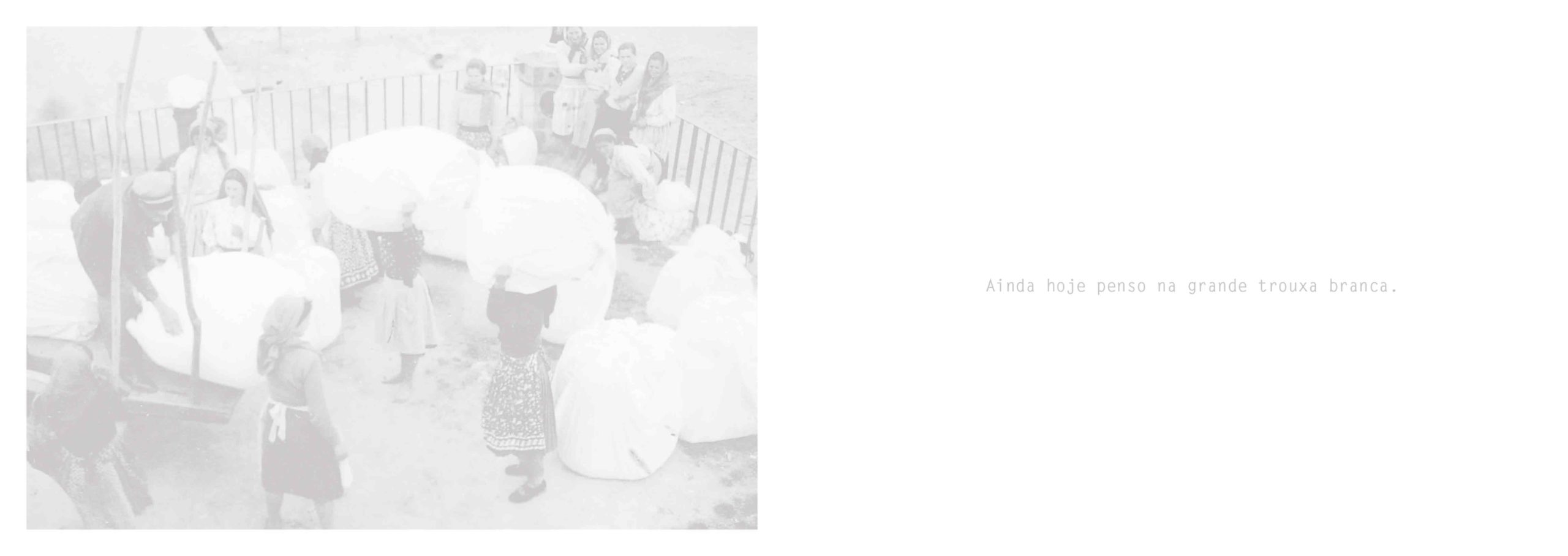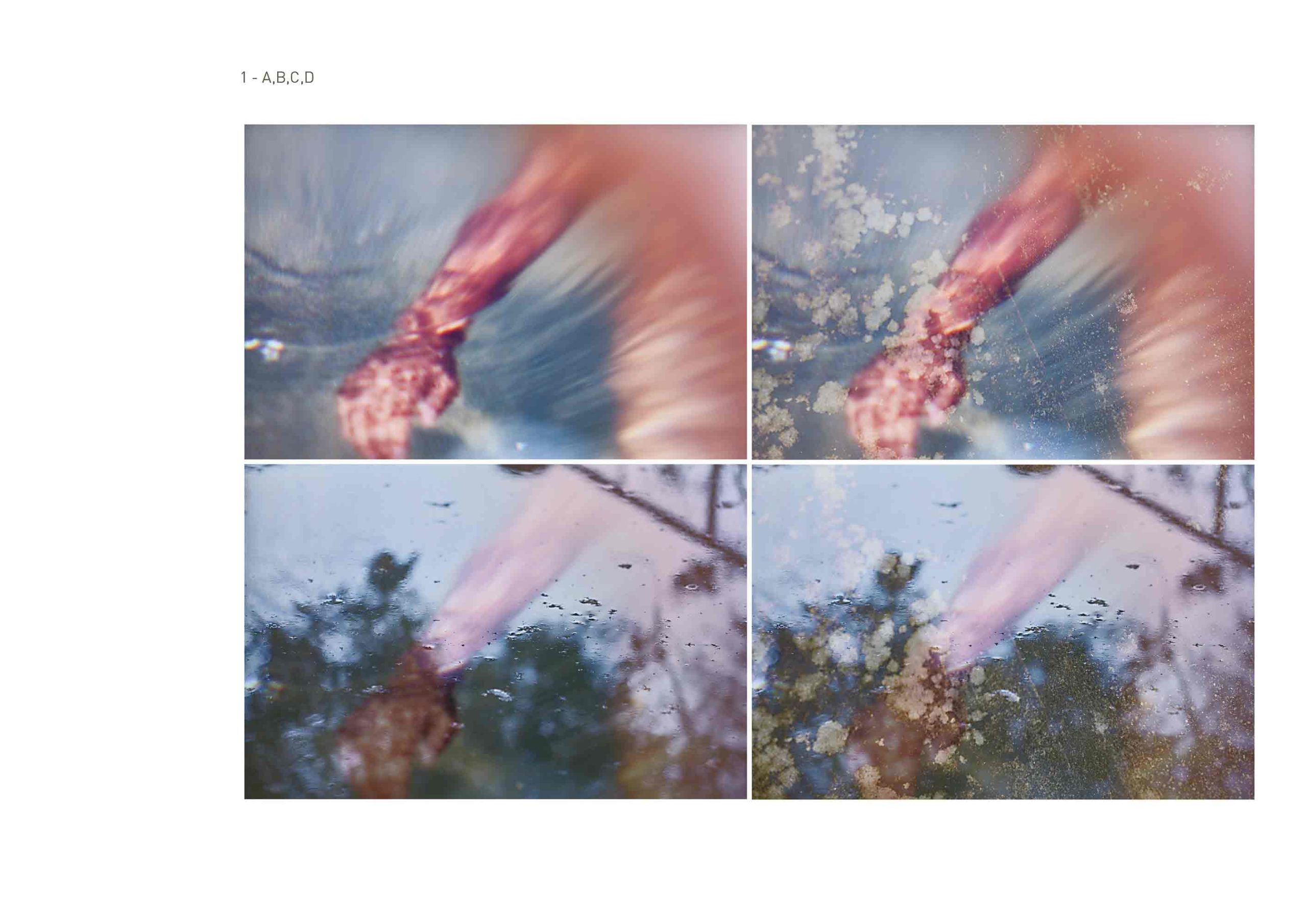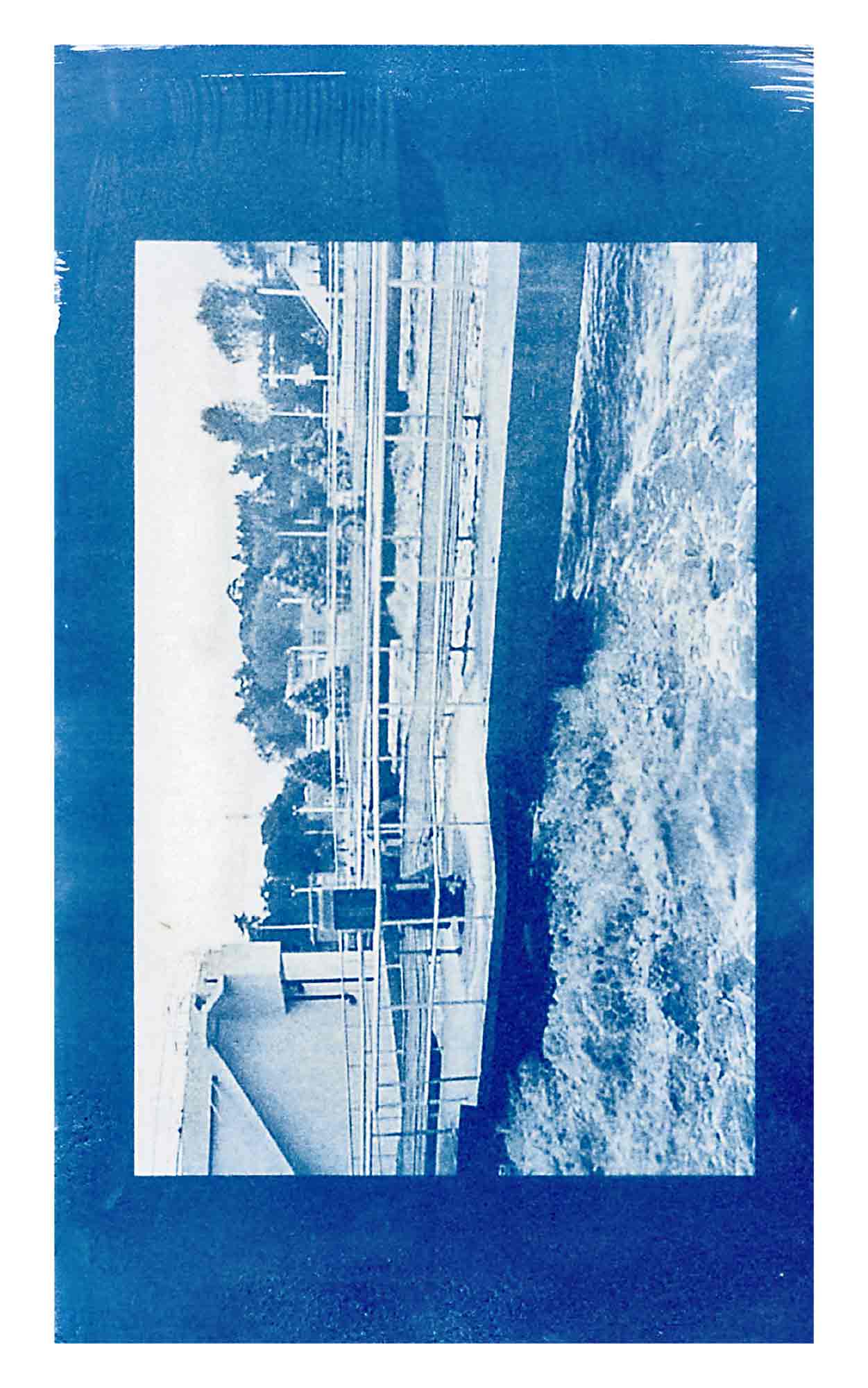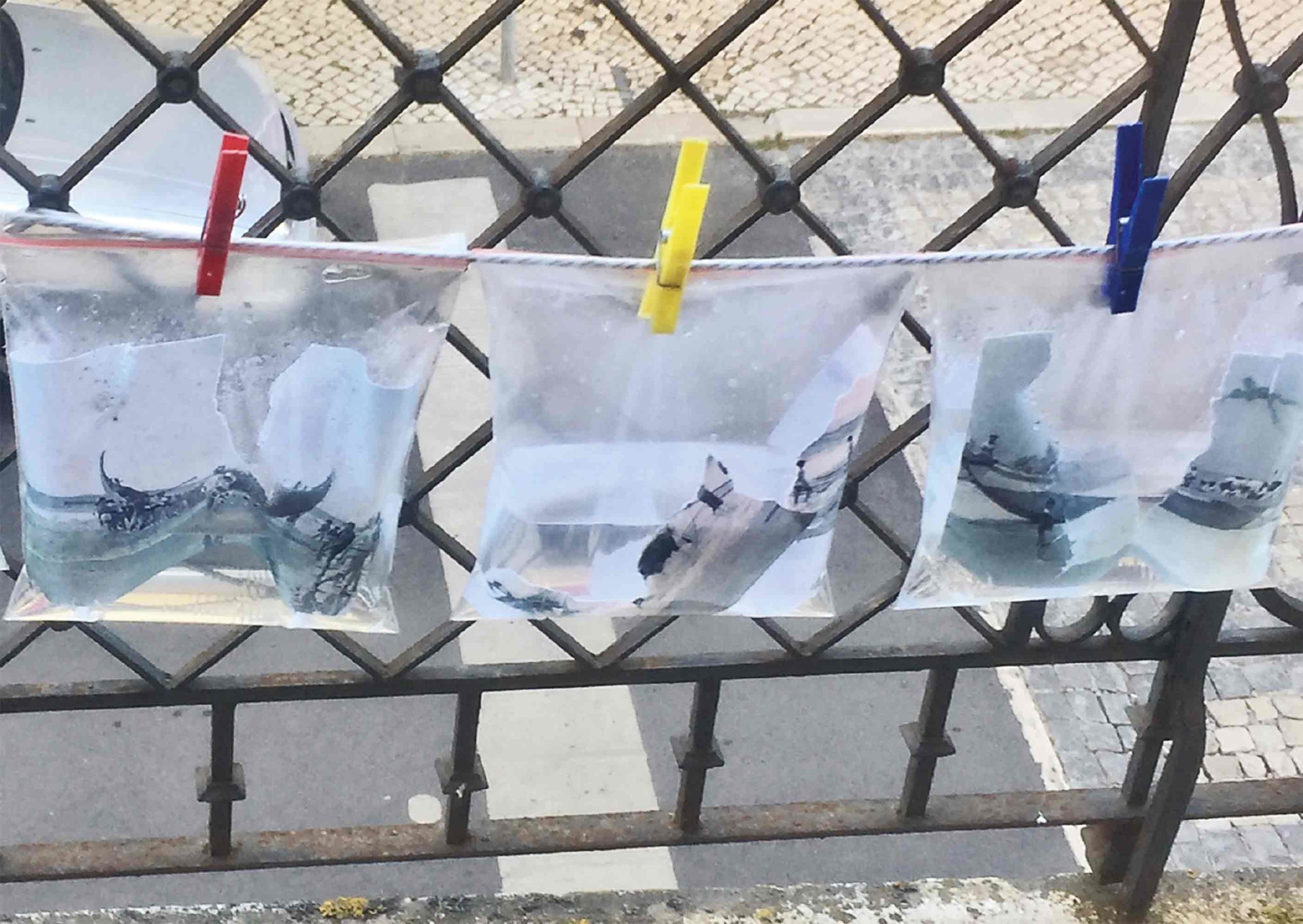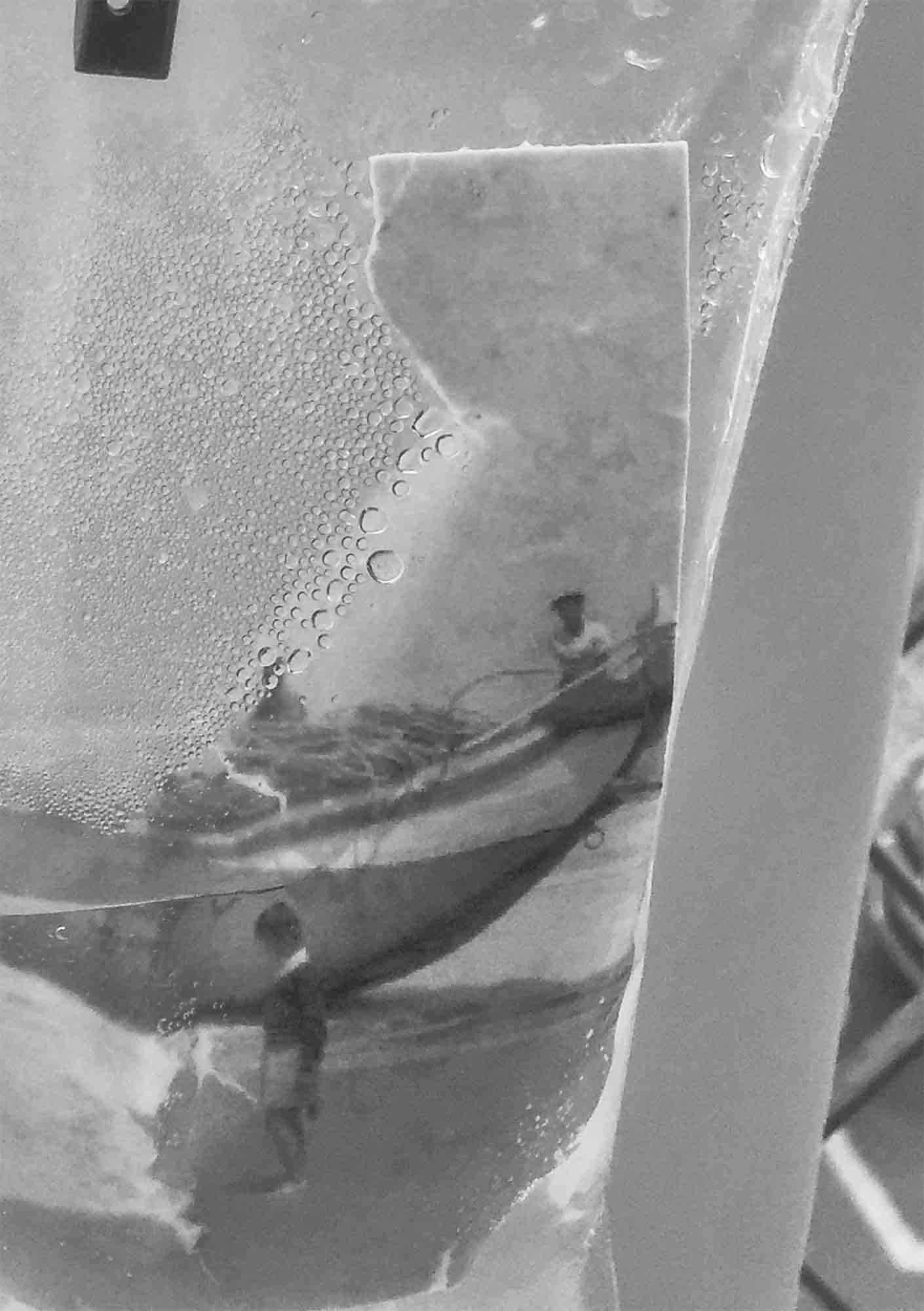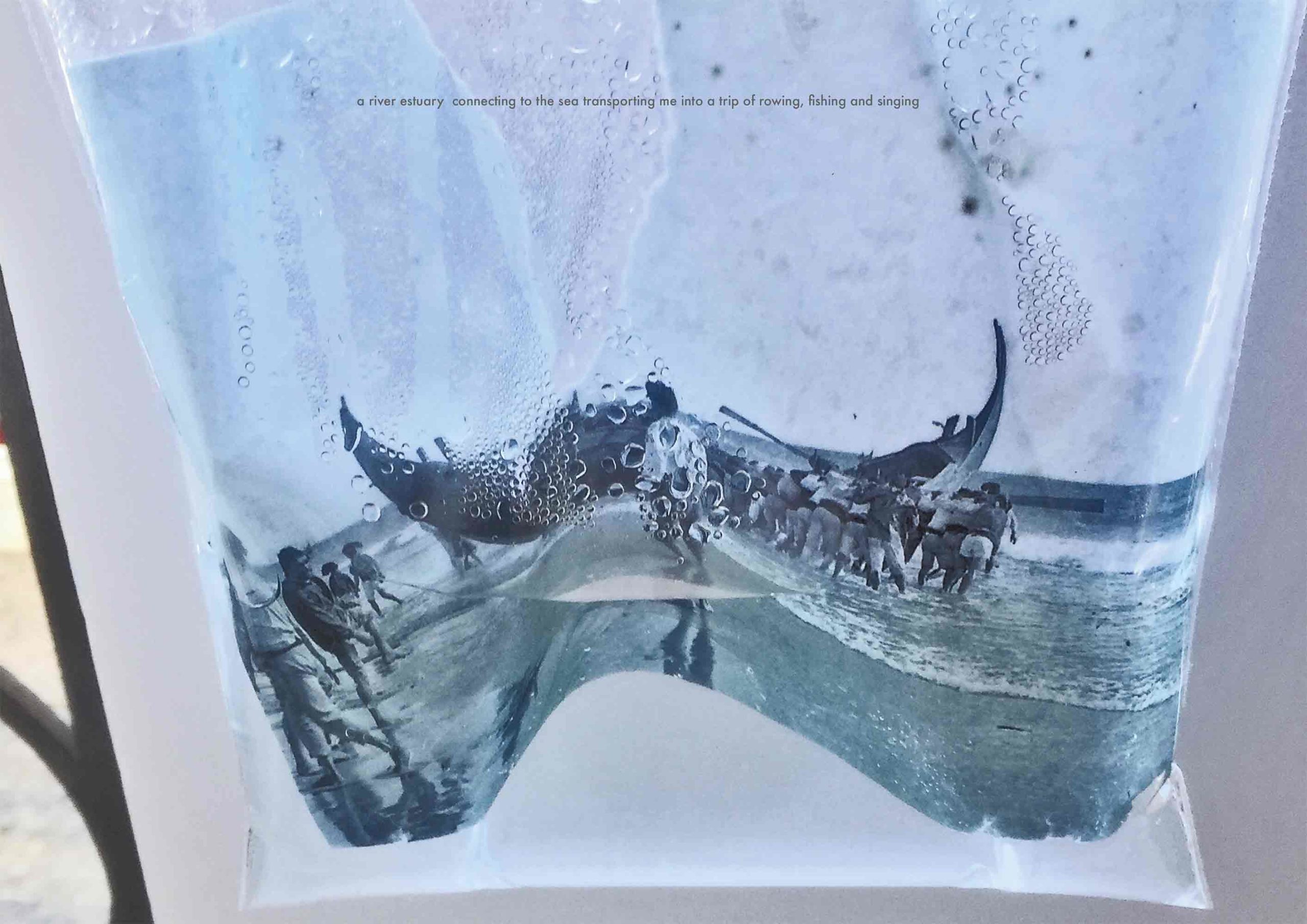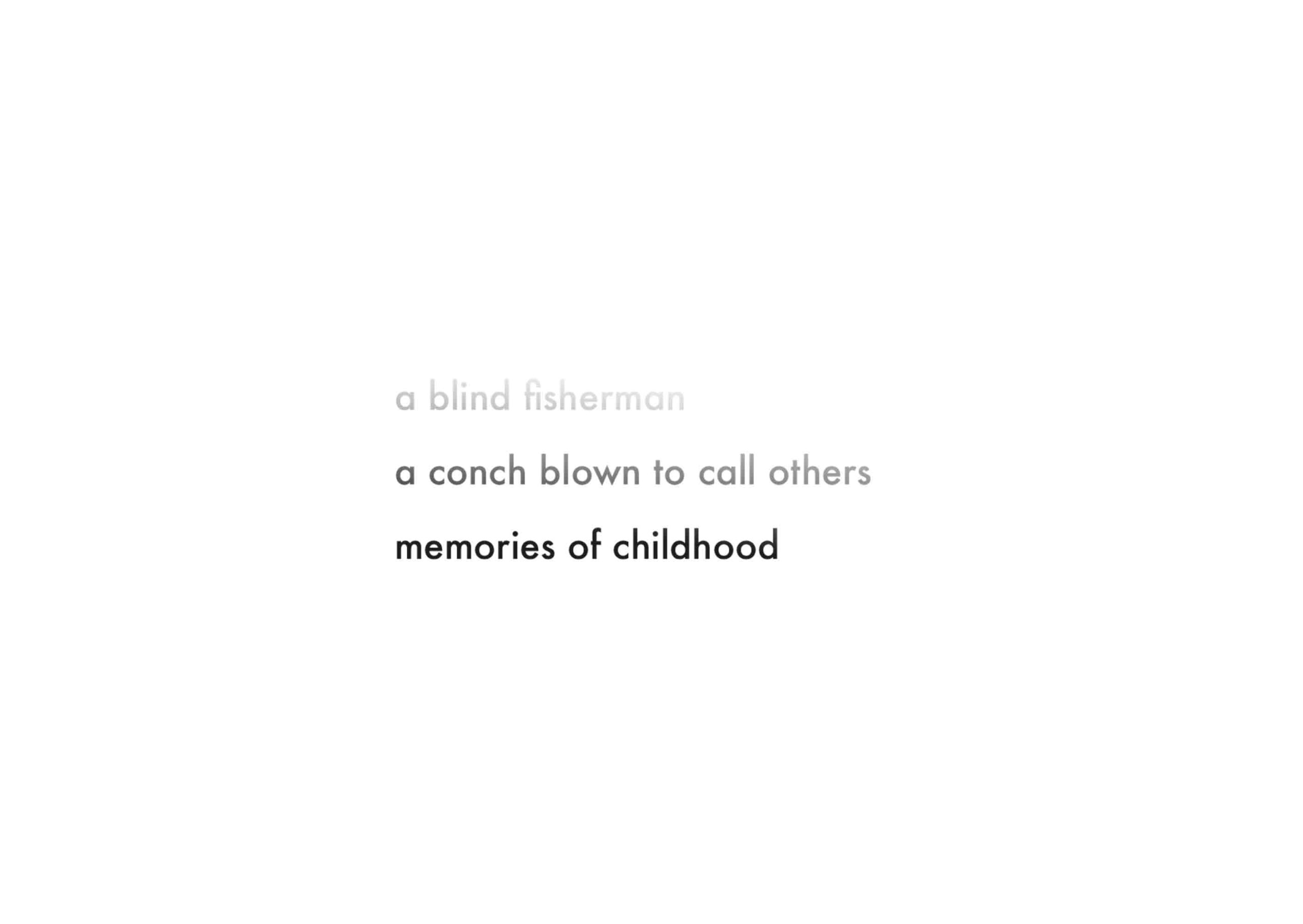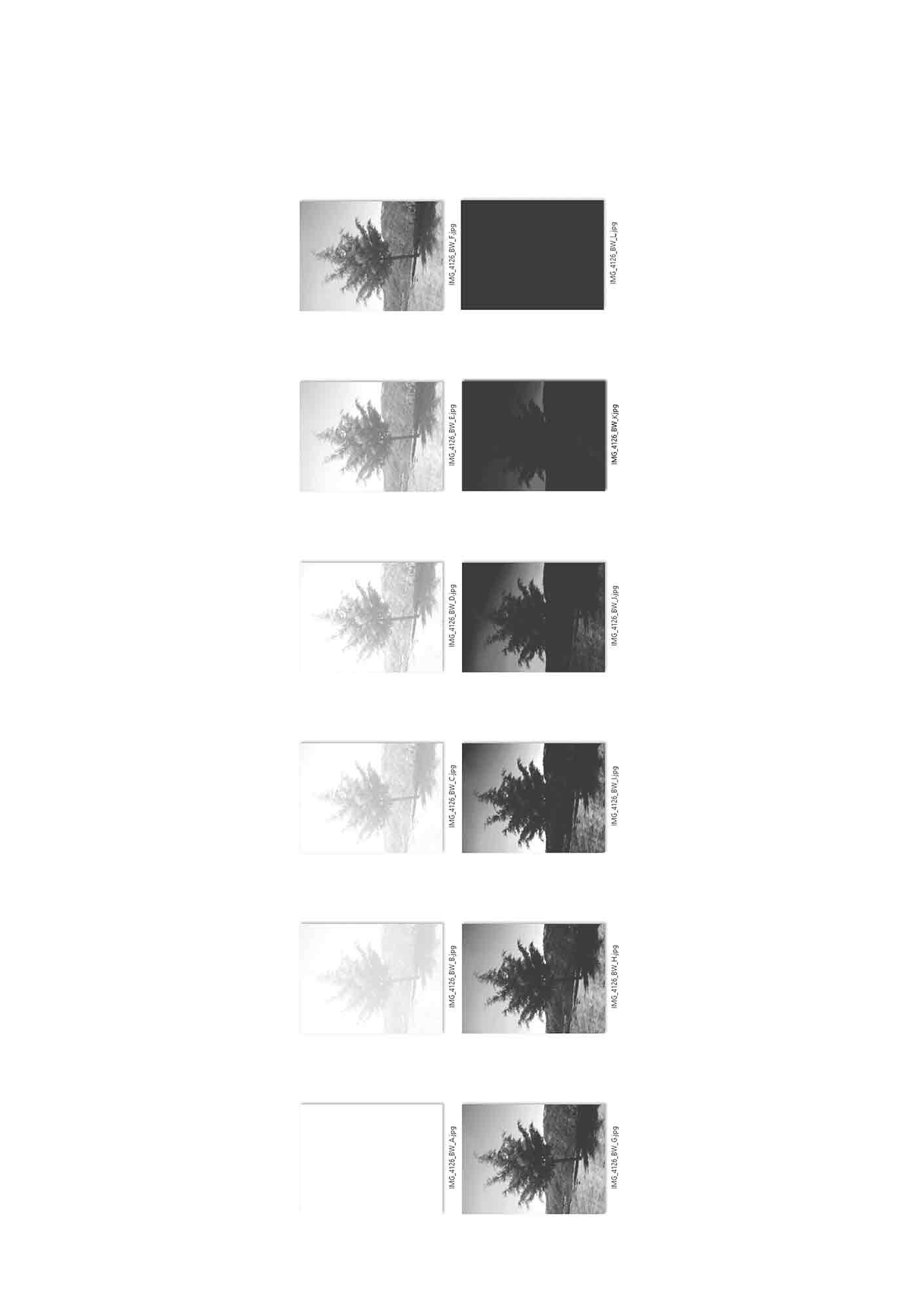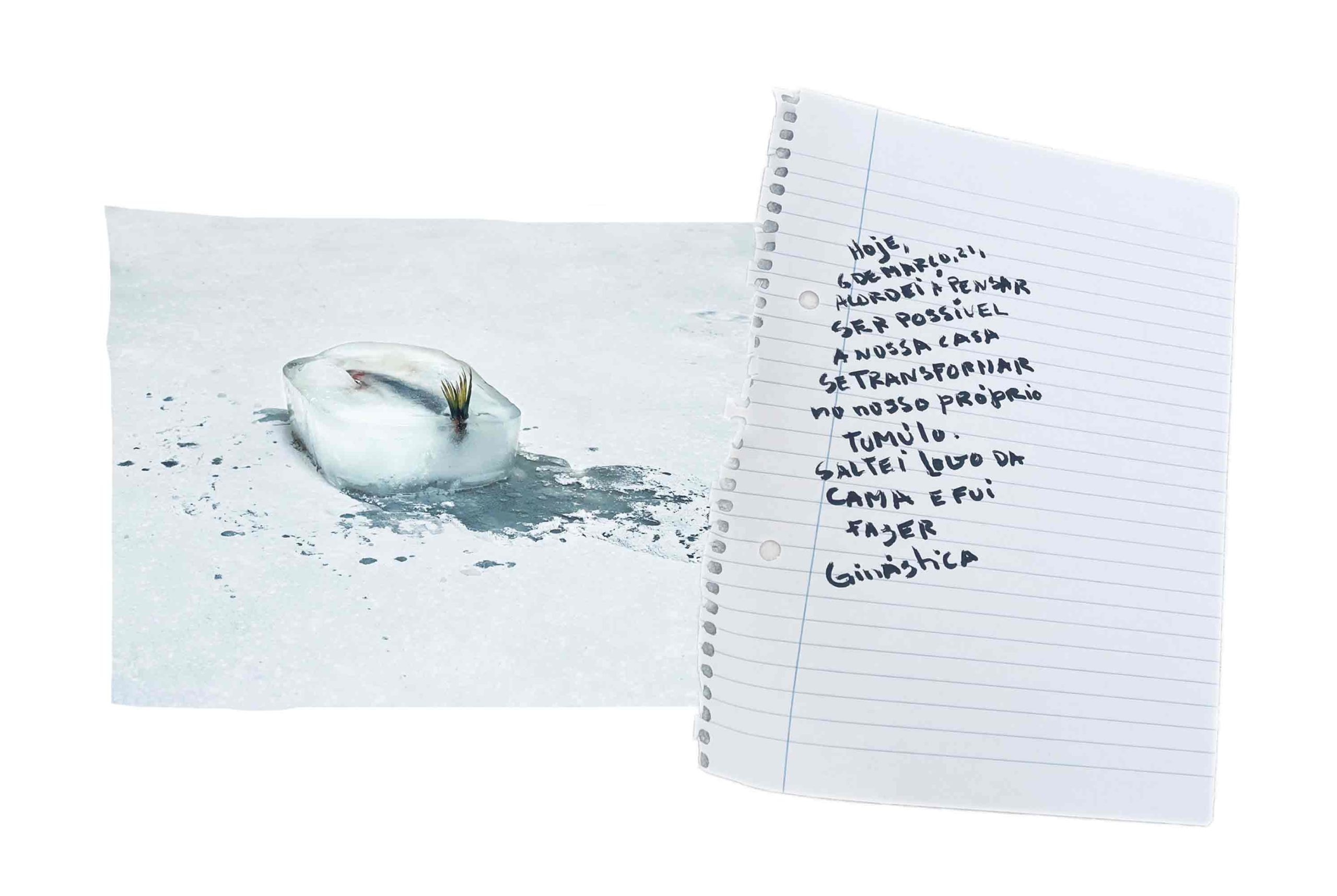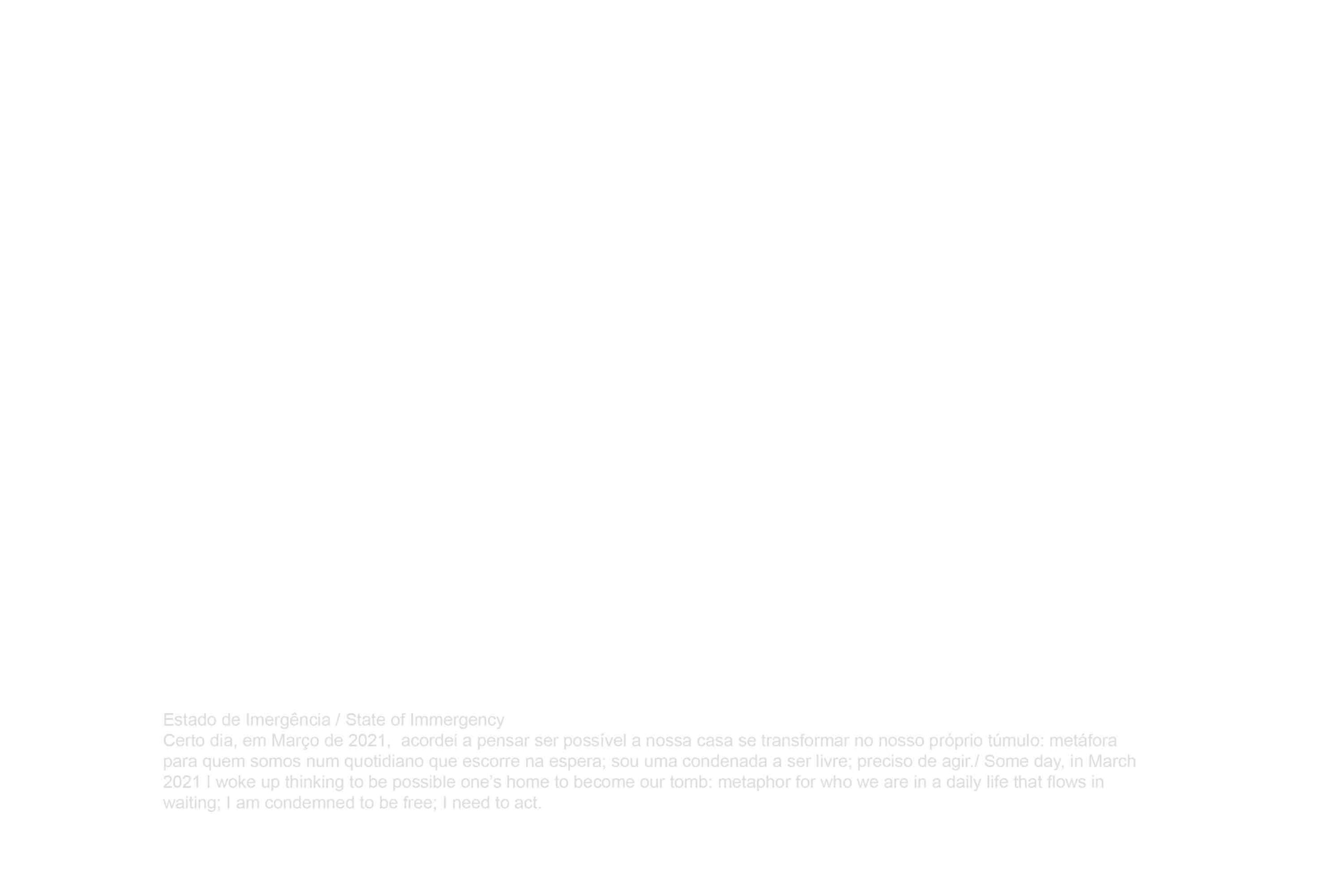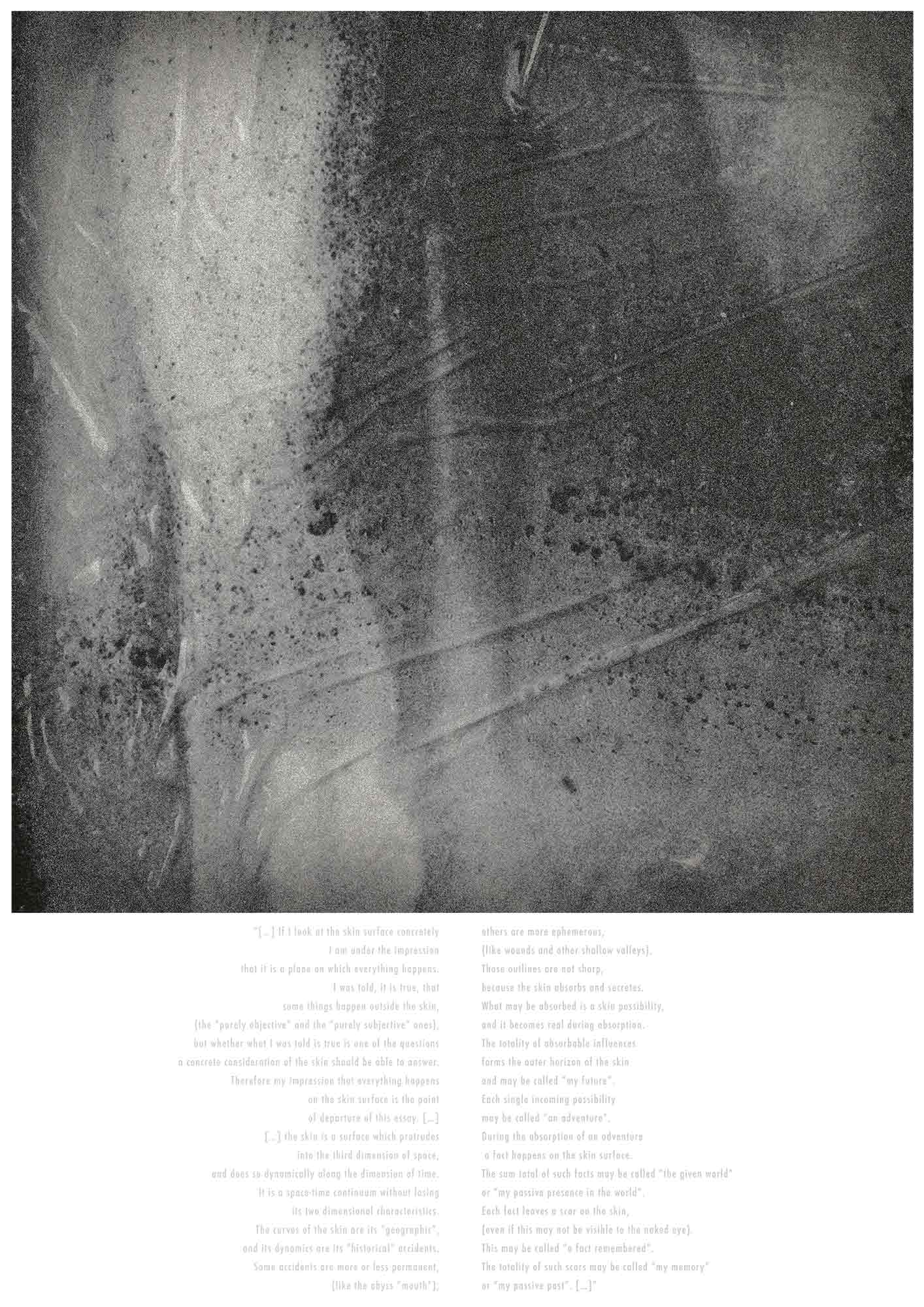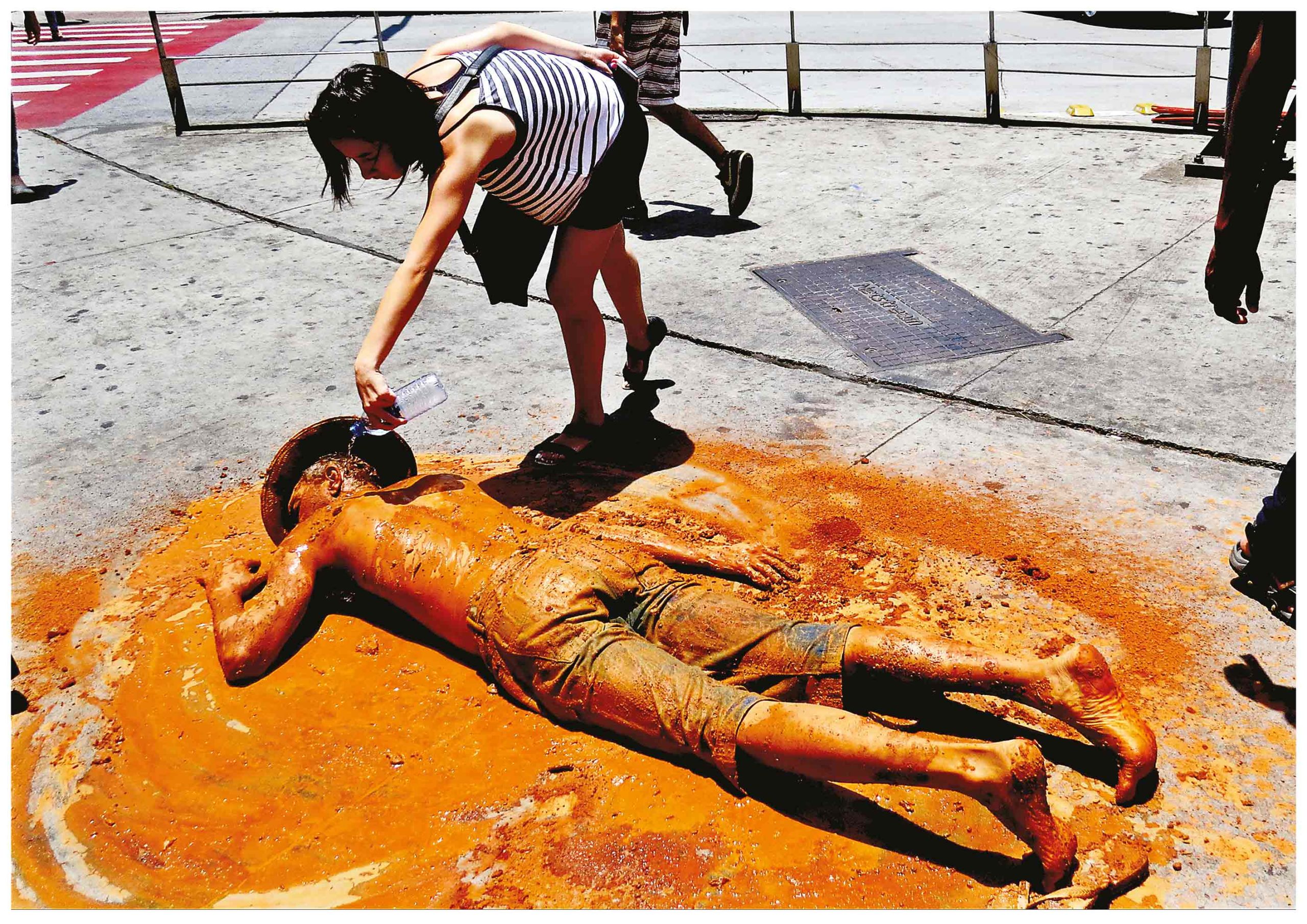liquid memories
figuring liquid memories::::::::::::::: mobile aesthetics of wateryquery (by paula roush)
“There is an undeniable tension between the solidity of a book and the wetness of water’s memory” as found in writers who chose to remember their emotional states through metaphors of watery depth.1 When artists dive into the past, which is frequently figured as watery places, the waters in these narratives immerse us in alternative modes of temporal experience that offer a potentially counter-hegemonic archive.
The experiments collected in this publication partake in figuring liquid memories as counter-narratives, whilst branching out into participatory, multi-sensorial approaches with photographic archives and real waters. Working with photographs of water (public and private) and water’s liquid physics, two main mobilities were revealed to us. One is the continuous flux of photographic archives, shape-shifting between screen and print; the other is water’s own archival, editorial and reading mobilities.
In 2021, London -based studio and publishing platform msdm –
mobile strategies of display & mediation – incubated and hosted
a two-part residency at the invitation of Francisco Varela,
to participate in his curatorial project, designed to explore the contact zone between water, photography and publishing.
Conceived as process-based, this publication started with
the “situated waters,”2 of the Douro River and Pasteleira reservoir park,
in the city of Porto, Portugal. This ecotone, a location in transition
at the juncture of multiple living and non-living systems,
offered a multi-scalar entry point into the relations between people and river.
The bookwork brings together the works assembled around the residency,
planned to happen in Porto, and performed online
as a result of Covid-19 lockdowns.3
The first bloc of works titled ‘WATER STATIONS’
was developed in workshop with a group of Porto-based
artists and photographers.4
Water samples collected from a local water treatment plant,
were used to soak the photographic collections,
and unleash water’s own archival materialities.
Inspired by the research of water visionaries,5
we explored the memory of water, life’s archiving medium,
to appropriate and collage historical archives.
Records held by two companies that capture water from the river
and distribute it to the city, include studies of the impact
of urban settlements on water’s sanitation.
Images by photographer Marques de Abreu,
first published in the 1909 study ‘Contribution to Hygiene in Porto,’
accompany a study of water infrastructure and its relation
to public urban health by medical doctor Bahia Junior,
a depiction of an early 20th century Portuguese “bacteriological city.” 6
Other records show men at work in the riverbed in the1980s,
building deep wells where Douro River flows.
Water and humans interact in these photographs,
exposing a logic of extraction, that came to eradicate
a now forgotten mythology of the golden river Durius, a deity worshiped
by the ancient Lusitanians and Celtiberians of the Iberian Peninsula.7
Its sacred shores brutally excavated with pipes and machinery
for the provision of tap water to the city,
led by Porto’s Lever Water Treatment Plant.8
The archives of a local grass roots environmental group,
offer a different snapshot of people’s interaction with water
at the Pasteleira Park, an informal self-built settlement,
situated by the Douro River shore.
This DIY (do-it-yourself) architecture,
is also visible in the Pasteleira 1950-90s Facebook group photographs,
shared by an anonymous social worker after its demolition.
Fonte das Ratas (‘Ratas Fountain’) functioned as communal watery source
and meeting point in a neighbourhood lacking water infrastructure.
A contested territory, Pasteleira underwent a gentrification process,
its ecosystems, and histories, displaced by state, church and cultural agencies working together to build over a historical site.
The park is now a ‘hydro-spectacle,’ a conversion of the disused water reservoir into the city museum, in the vicinity of Serralves contemporary art museum.
The second bloc of works titled ‘WATER STORIES’
was activated through a mass zoom live editing lab
and open call for further collaborations.9
This was an online workshop cum networked performance,
staging the ‘water stations’
(capture, organic, suspended, mud, deep mud, rough)
in six breakout rooms.
The addition of a 7th station for participatory tools,
offered a meta-room to map participation.
The session started with the activation of visitors’ felt sense,
awakening their intuition for liquid navigation of the ‘water stations’
and their own photographic collections.
This, in turn, resulted in projects that unfolded memories
in relation to emotional and psychological dimensions,
liquid memories figured as bodies of water:
an urban stream, misty waterscapes, a childhood pond,
fishing sea vessels and sounds, the Atlantic ocean and,
for those in the diaspora that lost their waters young,
other waters collected here and there to embody those liquid emotions.
In both blocs – ‘WATER STATIONS’ and ‘WATER STORIES’ –
historical subjects appear as meteora,
atmospheric phenomena like windy rain, clouds, misty vapour,
and as watery places like rivers, lakes, streams, oceans, water stations,
wet environments, inseparable from various human and non-human actors.
They are chaotic, fragmented, messy, unruly, flow, fall,
dissolve in multiple layers, with slippages, deep wells, knots, holes,
underground tunnels, flooding, and contamination.
Diffraction is the way waves of light or water overlap,
producing inter-relational patterns of interference in flux.
It is equally a tool 10 used for a fluid form of knowledge-production,
that inspired our diffraction apparatuses.11
Whilst “reflective remembering” is more about an individual narrative
“that savors details and memorial signs,”12
we relied on the material characteristics of water,
their perpetual spiraling motion,
to read liquid memories with water’s surface tension,
swirling vortices, pressure, and density,
as seen in the chaotic sensitivity of water in constant motion.13
Moving through time like water waves,
one memory reads through another, as they meet and overlap
in their entangled entanglements.
Seen, for example, in wave patterns of light and dark lines
of light waves moving across the flatbed scanner
encountering the obstacle of historical photographs
being dragged across the glass;
or in the swirling spherical marks created by contact print on floating ink,
a result of water waves created through surface tension.
We draw insights from new materialism feminist models of wet historical time, challenging the repression of wetness from western philosophy.14
In this conception, fluid liquids offer a model for time, space, and matter
in relational flux. We follow this relational ontology
and approach water as process of becoming,
dissolution of human and non-human, bodies and water, 15
an ecologically oriented posthuman feminism for the Anthropocene.16
Liquid water has also been repressed from
the histories and practices of photography.17
Focusing on physical waters rather than metaphors
of liquid photographic data flows,18
we chose to pay attention to specific ways in which waters
mark their motion on paper surfaces.
The movement between these two figurations-
analogies of water on printing processes
and revelations of the world through printed pages,
allows us to read, archive and publish photographic images
through wet photoprints and publications.
Our methodology of indaguar (wateryquery)
emerged out of artistic research with water.
An incremental process of formulating the implicit,
and an adaptation of Thinking At the Edge,19
step by step guided exercise to help us figure our bodies of water;
two words ‘indagar’ (enquiry) and ‘agua’ (water) joined together
to form a new word that doesn’t feature in standard dictionaries
and suggests a felt sense of enquiring with water.
In the method there is a focusing moment of connection
with our liquid bodies, the intricacy of our watery memories.
Unlike other approaches to ‘liquid books,’20
where the term is used as a metaphor for the potential
of open access multi-authored electronic publishing,
our interest lies in the intersections of artists’ publishing with liquid waters –thematically and formally.
Books that take wet nature as aesthetic reference
and cultivate an aesthetic of variation.
That an oceanic book,21
A Voyage on the North Sea, 1973 –
a book and film in a box, pairing images
of amateur’s 19th-century painting of fishing vessels
with photographs of a 20th century sailboat,
with instructions to read with a knife–
is chosen to build an argument
about the aesthetic mobility of the artist’s book
is revelatory of the synchronicity of watery aesthetics
and the book format.22
Likewise, Le Livre (‘The Book’)23
is mobilised in ‘The Open Work,’
as the ideal dream of a mobile work:
a work in motion, a utopian bookwork,
that can be rearranged by the reader
and always express new perspectives
by allowing the deconstruction of its unity into smaller, fluid units.
A core feature of early 20th century art publishing
is its aesthetic of process over product,
display of ink stains and variations from copy to copy
to emphasise mutability over final form,
as evidenced in Mirskontsa (Worldbackwards).24
And the “swamp style” book, A Ave (The Bird),25
the book-poem at the core of the Process/Poem movement,
analogises the Amazon River waters,
with punched holes to be actively read
through rearrangement of pages and textual fragments
that reveal (flying) lines of liquid poetry.
1 Virginia Woolf and Marcel Proust are two of the artists that approach the past as watery matter out of which they pull submerged memories. See Janine MacLeod, “Water and the Material Imagination: Reading the Sea of Memory against the Flows of Capital.”
in Thinking with Water, ed. Cecilia Chen, Janine MacLeod and Astrida Neimanis (Montreal, Quebec: McGill-Queen’s University Press, 2013)
2 Cecilia Chen, “Toward a Hydrological Turn? Ibid.
3 liquid memories workshop was to have taken place at the Faculty of Fine Arts at the University of Porto and had to be moved online due to the Covid 19 pandemic
4 Liquid workshop, January and February 2020
5 Like Masaru Emoto The Hidden Messages in Water (Beyond Words Pub, Emeryville, CA: 2004)
6 Term used by Matthew Gandy in his studies of water, sanitation, and the modern city
7 See Jo Forty, Mythology: A Visual Encyclopaedia (Sterling Publishing Co., 2001)
8 Located next to the Crestuma-Lever reservoir, with its deep wells, pumping stations, surface water capture stations, raw water reservoirs and mud treatment units.
9 Liquid Assembly, March 5th, 2020
10 Donna Haraway, Modest_Witness@)Second_Millennium.FemaleMan Meets_OncoMouse™: Feminism and Technoscience (New York: Routledge, 1997)
11 Karen Barad, Meeting the Universe Halfway: Quantum Physics and the Entanglement of Matter and Meaning (Durham, NC, and London: Duke University Press, 2007) Chapter 2: “Diffractions: differences, contingencies and entanglements that matter” for water and light diffraction patterns
12 Li Li, Memory, fluid identity, and the politics of remembering: the representations of the Chinese Cultural Revolution in English-speaking countries (Leiden, Netherlands; Boston, Massachusetts: Brill, 2016)
13 Theodor Schwenk, Sensitive Chaos: The Creation of Flowing Forms in Water and Air (East Sussex: Rudolf Steiner Press, 1996)
14 Jessica Bardsley, “Luce Irigaray, Michel Serres, and the Ages of Water,” philoSOPHIA, 8/ 2 (2019): 13- 38
15 Luci Attala, How Water Makes Us Human: Engagements with the Materiality of Water (University of Wales Press, 2019)
16 Astrida Neimanis, Bodies of Water: Posthuman Feminist Phenomenology (London: Bloomsbury Publishing, 2017)
17 See Water in the Camera (chapter 3), Kaja Silverman, The Miracle of Analogy or The History of Photography, Part 1 (Stanford, CA: Stanford University Press, 2015) and Jeff Wall “Photography and liquid intelligence, “in Jeff Wall: Selected Essays and Interviews, ed. Peter Gallassi (New York: Museum of Modern Art, 2007)
18 The metaphor of liquidity in late capitalism followed by Joanna Zylinska “On Bad Archives, Unruly Snappers and Liquid Photographs,” Photographies, 3:2 (2010): 139-153
19 Eugene Gendlin’s exercises that are part of his philosophy of the implicit. https://focusing.org/felt-sense/thinking-edge-tae
20 See Gary Hall and Clare Birchall project http://liquidbooks.pbworks.com/w/page/11135951/FrontPage
21 Marcel Broodthaers, A Voyage on the North Sea (London: Petersburg Press, 1973-1974)
22 Anne Moeglin-Delcroix, Esthétique du livre d’artiste (Marseille: Le Mot et Le Reste, 2012) chapter 1 Qu’est-ce qu’un livre d’artiste? relies on Marcel Broodthaers’ A Voyage on the North Sea, 1973 to formulate the aesthetics of the artist’s book argued in the study.
23 Le Livre (The Book) by Stéphane Mallarmé (published first posthumously in French in 1957) in Umberto Eco, The Open Work (Harvard University Press, Year: 1989).
24 Aleksei Kruchenykh, Velimir Khlebnikov, Natalia Goncharova, Mikhail Larionov, Nikolai Rogovin, Vladimir Tatlin, Mirskontsa (Worldbackwards) (St. Petersburg: G. L. Kuz’min and S. D. Dolinskii, 1912)
25 Inspired by the Pantanal region near Cuaibá (Amazon, Brasil), Wlademir Dias-Pina, A AVE (The Bird), Wlademir Dias-Pina: 1948–56. originally published in 1956. e-book published 2015 https://issuu.com/antoniomiranda/docs/wlademir_dias_pino
contact
paula roush ::: paularoush@gmail.com
msdm studio ::: msdm@msdm.org.uk
